Jobs-to-be-done interviews are a powerful tool for understanding customer needs and optimising the innovation process. But what if the expected results fail to materialise despite careful execution? In this article, we highlight common stumbling blocks and show how you can achieve real progress through effective hypothesis validation and qualitative market research.
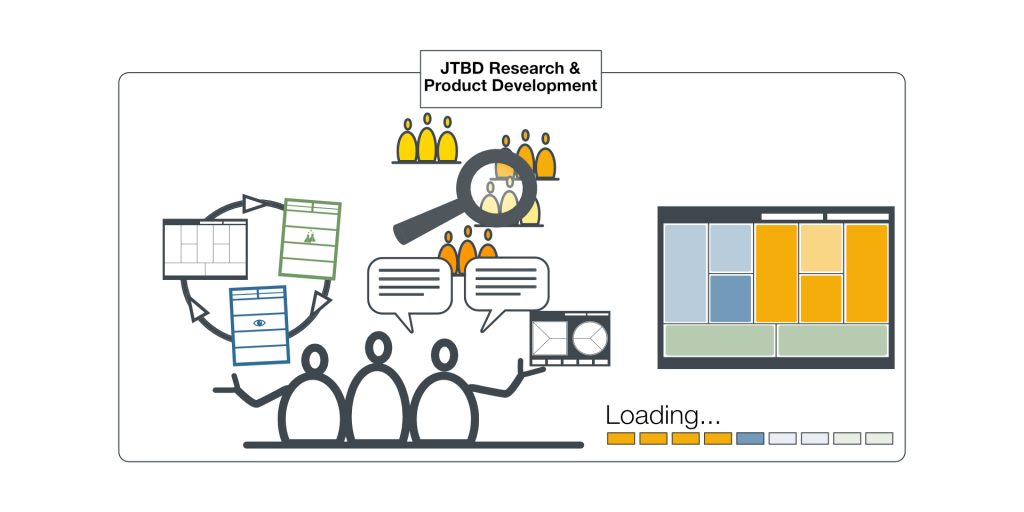
JTBD interviews are designed to visualise customer needs – but often nothing happens afterwards. In our podcast episode 94, we talk about the typical stumbling blocks in JTBD research transfer – and how to overcome them. We show you how to use jobs-to-be-done research strategically and systematically transfer results into products, communication and innovation.
By Peter Rochel
Those who conduct qualitative interviews want to understand.
What drives people. Why they buy. Why they switch. Why they hesitate.
But all too often these insights remain inconsequential. They end up in the cupboard, in the drive or in the slide deck – somewhere between gaining knowledge and stopping the project.
Why is that?
This is exactly what I spoke to Jan Milz about.
Lean Product Manager, JTBD researcher since 2013, former Product Owner at XING, now part of the team at Oberwasser Consulting.
What began as a conversation about qualitative research quickly turned into an in-depth analysis of the most common failure: the lack of transfer.
‘We did great interviews – but nobody knew what to do afterwards.’
– Jan Milz
The problem was not in the methodology. Not in the data. But in the system.
In many companies, jobs-to-be-done research is commissioned without a clear mandate.
Without a target definition. Without an idea of how what could be discovered is to be transferred to existing processes.
A central misunderstanding:
Good JTBD interviews do not follow traditional guidelines.
They are explorative, retrospective, narrative. They work with depth, not with tables.
‘I didn’t have a guideline – because I wanted to find hypotheses, not confirm them.’
– Jan Milz
Those who order ‘research’ often expect comparability, controllability and measurability.
What they get is causality. Complexity. Context.
And if it doesn’t fit together, the project ends – no matter how good it was in terms of content.
The real weak point is not the research. It’s what comes afterwards – or not:
Transfer.
How does a job-to-be-done become a product idea? A marketing message? A business model hypothesis?
Many people can’t answer that. Or they have never planned it.
‘Often a great JTBD interview comes out – and then there’s a team of 30 developers who have long since started coding.’
– Peter Rochel
Jan describes it as his most common reason for frustration in research:
Results were delivered – but nobody could use them.
‘Not because they were bad. But because they didn’t fit.’
No context. No customer. No purpose.
This is not an exception, but unfortunately the rule. And not just in the start-up sector, but also among established SMEs and corporations.
It takes more than interviews. It needs structure.
Together, Jan and I have developed an open, clear JTBD process that doesn’t end with the survey – it starts there.
‘It was the first time that I received a JTBD synthesis result that I could not only read, but also understand and apply.’
– Jan Milz
Another problem is that the term ‘jobs-to-be-done’ is overstretched.
What Tony Ulwick means by this is something completely different from what Bob Moesta means.
One optimises existing solutions. The other is looking for new markets.
Both have their justification. But if the client and service provider do not have the same vision, the result can only be disappointing.
‘Make me a JTBD project’ is about as precise as:
‘Make me an MVP.’
Frustration at the lack of transfer initially gave rise to an idea:
A retreat – a place where practitioners can learn together, try things out and think more deeply.
Was wir schon jetzt tun, ist ein erster Schritt dahin:
Die JTBD Meetups von Oberwasser Consulting & UTXO Solutions.
People who work with JTBD – or want to start – meet here regularly.
We share experiences, methods, projects and aha moments. Open. Uncomplicated. Without slide battles.
👉 Info & registration for the next Meetup
If this appeals to you – we look forward to hearing from you.
Podcast episode 094 – JTBD Research & Transfer: Why good interviews are often not enough
👉 Listen →
Want to find out more about our JTBD process?
Or do you know the problem of ‘good research, but no result’ from your own experience?
📩 Simply write to us at info@oberwasser-consulting.de

Crises are mercilessly honest: they not only bring weaknesses to light, but also create space for new ideas. If your company is currently struggling with financial bottlenecks, innovation bottlenecks or changing market requirements, you should pay attention. Because right now can be a decisive turning point. It is often not enough to simply adjust the same strategies a little – you need to recognize the true needs of your customers. And this is exactly where structured JTBD interviews come into play.
To really understand customers, you need more than just product surveys. The periodic table of elements we use is divided into five main groups:
With this framework, you systematically uncover the hidden potential that lies dormant in the customer perspective. The result: clear recommendations for action that are not just based on assumptions, but on sound findings.
Tips: Learn more about our JTBD Innovation Framework at https://oberwasser-consulting.de/mastering-jobs-to-be-done-ein-framework-fuer-mehr-als-nur-produktentwicklung/
Reading tip: Jobs to Be Done has long been more than just a theory. This article on impulse.de explains how we use structured interviews to help companies really understand their customers – and create innovations that are not just based on assumptions.
A small family business in NRW, specializing in premium e-bikes from 3,000 euros, was on the brink of collapse. Declining sales, an overflowing warehouse and the prospect of insolvency were putting pressure on the company. In just one week, we conducted seven structured JTBD interviews with potential and existing customers. The aha experience? Older buyers didn’t just want an e-bike, but first and foremost freedom, social connection and an extended range of movement.
Instead of fighting further discount battles, the business focused on mobile test drives in central locations: markets, parks and busy squares. The result: the entire annual stock was sold within 2.5 months. The crisis was not only averted – it turned out to be an accelerator for a completely new sales approach.
More practical examples?
Take a look at our case studies to see how other companies have creatively mastered crises.More on this in the article “Innovation: Your solution for weathering uncertainty” by McKinsey, which is well worth reading.
What can we learn from this? Firstly, those who proactively research their customers’ Jobs to Be Done in times of crisis gain crucial insights for truly new ideas. Secondly, a structured framework such as the periodic table of elements acts as a catalyst for innovation because it brings clarity to seemingly chaotic situations. And thirdly: crises require speed and courage. If you wait until the market recovers “by itself”, you can quickly lose touch.
If your company is in the middle of a crisis – or is simply ready to take the next big step: Get in touch with us. Together, we can unleash the innovative power that lies dormant in every crisis.

In this episode of our podcast “The Bitcoin Effekt”, Dirk Roeder, member of the Web3 Infrastructure and Solutions team at Deutsche Telekom MMS, discusses the role of blockchain and Bitcoin in the business world. With his experience in the blockchain industry since 2016, Dirk offers a deep insight into the challenges and opportunities that blockchain technologies offer for large organisations.
Dirk Roeder brings his extensive experience in blockchain technology to Deutsche Telekom and plays a key role in the research and implementation of Web3 solutions.
The episode highlights Dirk’s journey to Deutsche Telekom, the company’s decision to focus on staking and blockchain infrastructure services, and the latest developments regarding Bitcoin and the Lightning Network. It will also discuss the challenges associated with introducing new technologies into a large organisation, as well as the environmental impact of Bitcoin and the associated business concerns.

This episode provides valuable insights into the intersection between advanced blockchain technology and adaptability in an established large organisation.
Further links:
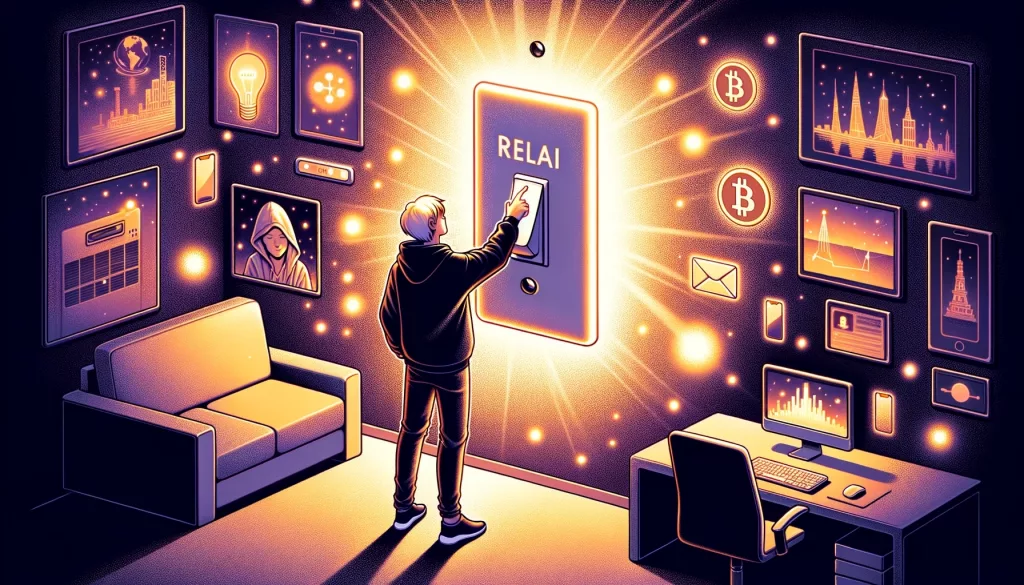
In a world where disruptive technologies set the tone, Bitcoin is also repeatedly at the centre of many discussions. But how do we make such fascinating technology accessible to the average person? This is the central theme of our latest Innovate+Upgrade podcast episode. In this episode, Julian Liniger reveals how he makes technology accessible to all and the challenges he had to overcome along the way.
Our guest, Julian Liniger, co-founder and CEO of Relai, has made it his mission to simplify the purchase of Bitcoin. His impressive background in business administration, banking and psychology offers him a unique perspective in the world of Bitcoin technology.
But that is not all. Julian recently earned a spot on the coveted Forbes 30 Under 30 list, highlighting his role as a leading innovator in the industry. In this episode, we dive deep into the challenges and solutions of buying bitcoin and discuss how to make technology accessible to everyone.
During the episode, Julian highlights the difficulties many experience when buying Bitcoin and how his platform, Relai, helps to simplify the process. It’s a fascinating discussion that highlights the balancing act between user-friendliness, disruption and the bridge between technology and everyday use.
For anyone interested in the intersection of technology, innovation and business, this is a must. It’s not only an opportunity to learn from one of the brightest minds in the crypto world, but also to understand how technology can shape our future.

Further links:
Welcome to the 100th Episode of Innovate+Upgrade! In this anniversary issue, we take a look back at almost six years of insights and developments in the world of strategic business development. It is a journey that has taken us through topics such as Business Model Design, Jobs to be done, Purpose and Progress, Exploration, Exploitation, Innovation and Transformation.
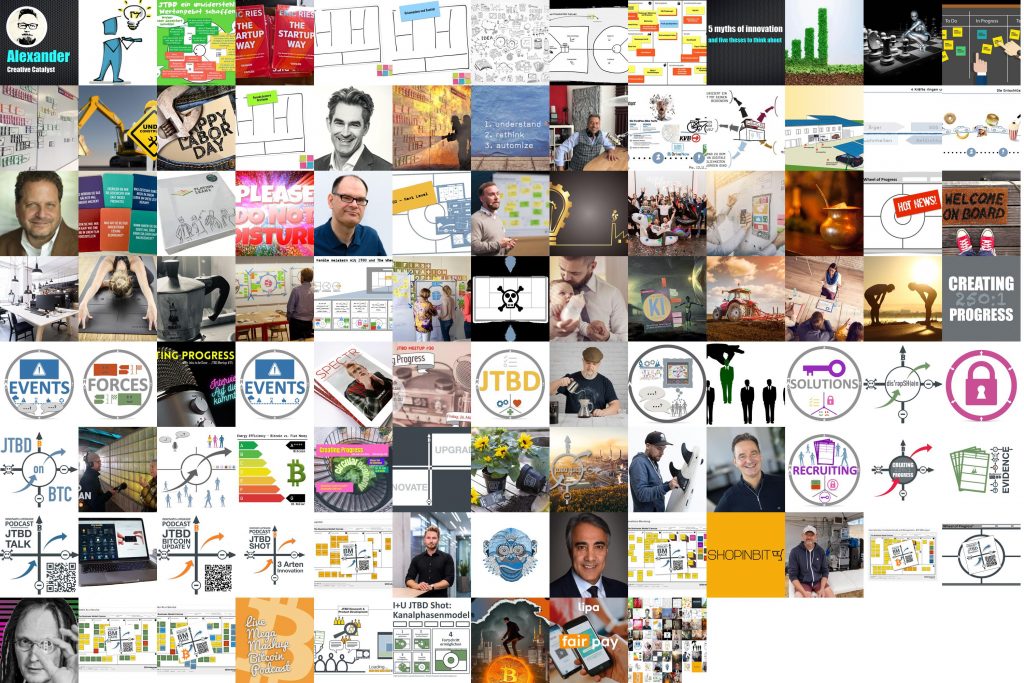
In this episode, we share not only the highlights of the last episodes, but also timeless content that can define your business in the future. We explore how all these elements are inextricably interwoven and how they shape progress from the customer’s perspective. We invite you to discover with us how you can identify and respond to customer needs to achieve sustainable success.
00:00:00 Intro
00:08:32 001 Innovation
00:09:05 002 – 5 Myths
00:09:45 003 JTBD Theory
00:10:39 004 JTBD Practice
00:11:50 005 Process innovation
00:12:37 006 Business Model Thinking
00:13:05 007 BM-Hack Hoover
00:14:16 008 Startup Way
00:15:22 009 BMH Heating system construction
00:16:03 010 Value Proposition
00:16:57 011 Growing Pains with Gavino Wismach
00:17:26 012 Business Model Hacking Bakery
00:18:48 013 Agil sales with Halina Maier
00:19:43 014 Agile recruitment with Christian Düngfelder
00:21:30 015 Thinking and using processes differently – with Gavino Wismach and Peter Rochel
00:22:13 016 Outcome Driven Innovation with Martin Pattera
00:22:22 017 Answering the wrong questions well with AI – with Stefan Holtel
00:22:29 018 Cargo Cult, Firefighting and Agility with Boeffi
00:22:44 019 Revolution of the world of work part 1 – with Sebastian Baacke
00:22:57 020 Revolution of the world of work part 2 – with Sebastian Baacke
00:23:06 021 Artificial intelligence in marketing – with Alex Wunschel
00:23:12 022 The online roofer – with Jens Oenicke
00:23:26 023 The JTBD Interview – With Eckhart Böhme and Peter Rochel
00:23:37 024 JTBD Interview Structure – with Eckhart Böhme and Peter Rochel
00:23:46 025 Better questions for JTBD interviews – with Eckhart Böhme and Peter Rochel
00:23:59 026 Learning innovation methodology through play with “Playing Lean 2
00:24:16 027 Innovative in the tough daily business – with David Muggli
00:24:32 028 Efficiency innovation – please do not disturb
00:24:45 029 How JTBD was invented – mit Bob Moesta
00:24:51 030 Qualitative market research – with Eckhart Böhme
00:24:57 031 Onboarding in a culture of innovation – with Kai Rödiger
00:25:02 032 From JTBD to the right solution – With Peter Sonderegger
00:25:09 033 Indika Silva on flavours and innovation between head and palate
00:25:20 034 Tools for better user experiences – with Stefan Freimark
00:25:32 035 User Research in UX Design – with Stefan Freimark
00:25:45 036 System errors in personnel recruitment – with Dennis Schenkel
00:25:58 037 Jobs to Be Done Next Level – With Eckhart Böhme and Peter Rochel
00:26:03 038 Coworking rewired, with Philipp Hartje from Share DnC
00:26:13 039 News about the Wheel of Progress
00:26:22 040 Implement JTBD better – with Gavino Wismach
00:26:30 041 Marketing turbo for sustainability – With Stefan Hück from Mantrafant
00:26:53 042 Customer interviews yes! But how and with whom?
00:26:59 043 The JTBD interview on buying a spare part for the coffee maker
00:27:08 044 Jobs to Be Done and Channels in the Business Model Canvas
00:27:24 045 Nobody wants Blockchain but Pay per Use – With Maximilian Forster from Cash on Ledger
00:27:35 046 Technologie and Greenfield Innovation
00:28:00 047 KI-volution – With Stefan Holtel
00:28:15 048 Finnovations – The full story of Stattys Notes
00:28:25 049 The Story of the Desk’s Job to Be Done
00:28:41 050 Corporate market research with Jobs to Be Done – with Sonja Knab from Burda Forward
00:28:56 051 Startup – You are not your customers! – With Johannes Deubner and Carolin Obernolte
00:29:18 052 Digitisation with insight – Stefan Dongus from Spectr Magazine
00:29:36 053 Clubhousekeeping
00:29:40 054 Talks on innovation and stakeholder leadership
00:29:55 055 Better coffee, better future! – With Dr. Gregor Reither
00:30:06 056 Shot – What is a JTBD?
00:30:11 057 Shot – What are JTBD Events?
00:30:15 058 Shot – What are JTBD Forces?
00:30:19 059 Talk round – It’s all about the questions!
00:30:38 060 Shot – How can you find events?
00:30:43 061 Shot – What is Limiting Context?
00:30:46 062 Talk round – Business for good, good for business?
00:31:19 063 Shot – Identifying good interview guests
00:31:27 064 Shot – What are JTBD interviews?
00:31:32 065 Shortage of Specialists- How can the Jobs to be Done method help?
00:31:40 066 Disruptive innovation in front of our eyes
00:31:50 067 Bitcoin – Driver of the Clean Disruption? With Daniel Wingen
00:32:15 068 Innovation Beyond Progress
00:32:52 069 Shot – What are JTBD solutions?
00:32:58 070 JTBD on Bitcoin – Update III
00:33:14 071 Talk round – Growth or change?
00:33:40 072 Mass products without waste and plastic – with Antonia Cox from Pottburri
00:34:22 073 Innovation and SDGs for Business with Patricia Moock
00:34:36 074 Alex von Frankenberg – Unicorns made in Germany and the HTGF
00:34:47 075 About banks without a solution and small savers – BTC Update IV
00:35:12 076 A surfboard becomes product of the year – with Stefan Klare from Tripstix
00:35:22 077 Shot – Recruiting interview guests
00:35:33 078 Intrapreneurship and Corporate Entrepreneurship with Christian Stumpf
00:36:05 079 Shot – Working hypothesis-based
00:36:16 080 Talk round – New and sustainable – What makes us more innovative?
00:37:01 081 The JTBD Bitcoin Study – Update V
00:37:46 082 Shopinbit – Unfair Advantage? With Lawrence Bahr
00:38:07 083 JTBD and Chaos Engineering with Nils Wloka from Steadybit
00:38:33 084 Business Model Hacking E-Commerce
00:38:45 085 Shot – The three types of innovation
00:38:54 086 Business Model Hacking Innovation consulting
00:39:08 087 Emlak24: PropTech start-up as a cultural bridge in the real estate market
00:39:55 088 Business Model Hacking with Bitcoin Impact
00:40:02 089 Low MedTech Innovation with Dr. Alexandre Wittig
00:40:27 090 Bitcoin strategy in the SME sector with Kristian Kläger
00:41:05 091 Deep Dive: Chat GPT – a classification with Stefan Holtel
00:41:27 092 Innovation in cashless payments for retail and gastronomy with Bastian Feder from Lipa
00:41:50 093 Business Model Hacking – Toilets as a service with Sanifair
00:41:54 094 JTBD Research and Product Development with Jan Milz
00:42:26 095 Lightning payments for businesses: Advantages, implementation and future of the Bitcoin payment system
00:42:30 096 Special Episode – Live Mega Mashup Bitcoin Podcast 2023
00:42:34 097 Important instead of complicated – The good relationship between Bitcoin and bank with Andreas Streb from VR Bank
00:42:54 098 Shot – Channel Phase Model: Optimise Jobs-to-be-Done Research
00:42:59 099 Unlocking Innovation: Fuzzy Front End Research with The Wheel of Progress with Katharina Weigert
00:43:41 Get Out
If you would like to learn more about the Jobs to be done Innovation Framework, you are invited to join our next open Jobs to be done Live Online Masterclass or Workshop. With eight sessions, each two and a half hours per session, we offer you a comprehensive opportunity to go deep into the practice. You can find all the information on our website.
For those who are already deep in practice, we offer our Jobs to be done Practitioners Offsite Event in Berlin in early November. Over two days we give practitioners the opportunity to exchange in a small group. You can find out more about this in the podcast episode with Jan Milz.
We are here for you! We cordially invite you to get in touch and enter into dialogue with us. We are ready to support you and your company in innovation efforts and discover customer needs together. Whether you have questions, suggestions or just want to exchange ideas – get in touch now!
It is a real pleasure to share this journey with you. With the right approach and a deep understanding of customer needs, together we can create sustainable success and shape the future. Stay inspired, stay motivated and discover the world of strategic business development with us. We look forward to many more years with you!
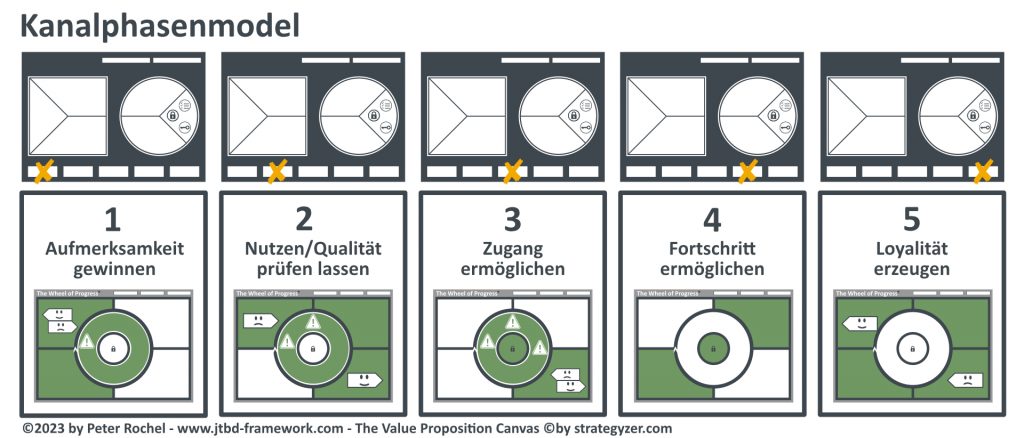
Discover the channel phase model developed by Peter Rochel to get the most out of your jobs-to-be-done research and optimally align your product or business model with customer needs.
Here we would like to introduce you to the Channel Phase Model, or Channel Value Proposition Design Model, developed by Peter Rochel. This model helps you to make the most of your jobs-to-be-done research and align your product, service or business model with the market.
The channel phase model is derived from Alexander Osterwalder’s “channels” from his book “Business Model Generation” and helps you to filter out exactly the information you need for your own innovation progress from your acquired data in the jobs-to-be-done research.
The following is described in five phases and linked to the research data:
By using the channel phase model, you can make marketing, sales and product as effective and efficient as possible. This saves your customers and yourself time, effort and money.
In practice, it has been shown that this can lead to leaps and bounds, such as radically shortening lengthy purchasing decisions or rapidly increasing sales while reducing marketing costs.
For practical examples, feel free to listen to podcast episode 4 of the first season or episode 1 of the second season. Also recommended is the article in Impulse magazine, April 2023 issue, page 20, which also offers an online article.
If you would like to finally implement innovation and transformation with jobs-to-be-done in order to win permanently enthusiastic customers, then get in touch with us. We can help you with workshops, sprints and trainings. Regardless of the size of your company or the industry. We do this in German, English or Spanish.
Cologne, 03.10.2023 – In times when companies need to constantly reinvent themselves to stay competitive, Oberwasser Consulting and UTXO Solutions jointly launch their latest live online workshop: “Mastering Jobs To Be Done (JTBD) Innovation Framework”.
This training is aimed at decision-makers, product managers, developers and other specialists in product development. It offers efficient methods and frameworks for all those who want to secure their company’s innovative edge. For the first time since 2020, Oberwasser Consulting’s complete JTBD Innovation Framework is again available in a format accessible to all and not just as an exclusive in-house offering.
“In a constantly changing business world, it is essential to systematically identify and respond to the real needs of customers. With our ‘Mastering JTBD Innovation’ workshop, we offer companies the tools and knowledge to keep their finger on the pulse and create future-proof innovations. I like to refer to this approach as ‘Careful Disruption‘ – a careful, thoughtful disruption of the familiar.”
Peter Rochel, owner of Oberwasser Consulting”.
The JTBD concept, which has its origins in Clayton Christensen’s work “The Innovator’s Dilemma”, focuses on understanding the real needs and desires of customers. Rather than relying on demographic or psychographic data, JTBD aims to identify the ‘jobs’ that customers want done and develop solutions that best fulfil those ‘jobs’.
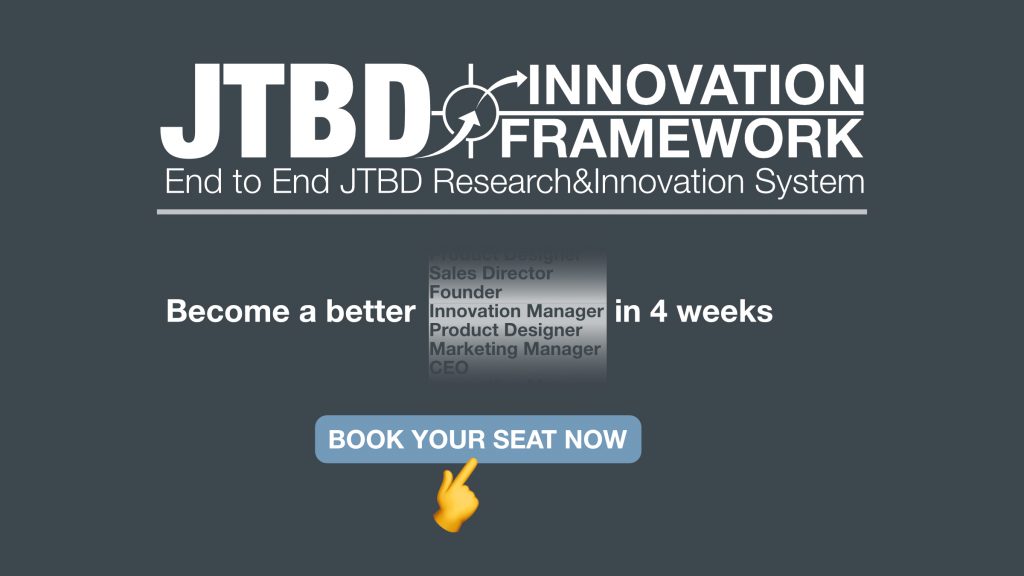
A central element of this workshop is The Wheel of Progress®, a practical model developed as a boundary tool by Eckhart Böhme and Peter Rochel to contextualise consumer behaviour. It enables companies to use applicable data directly in the next phases of the business or product development process.
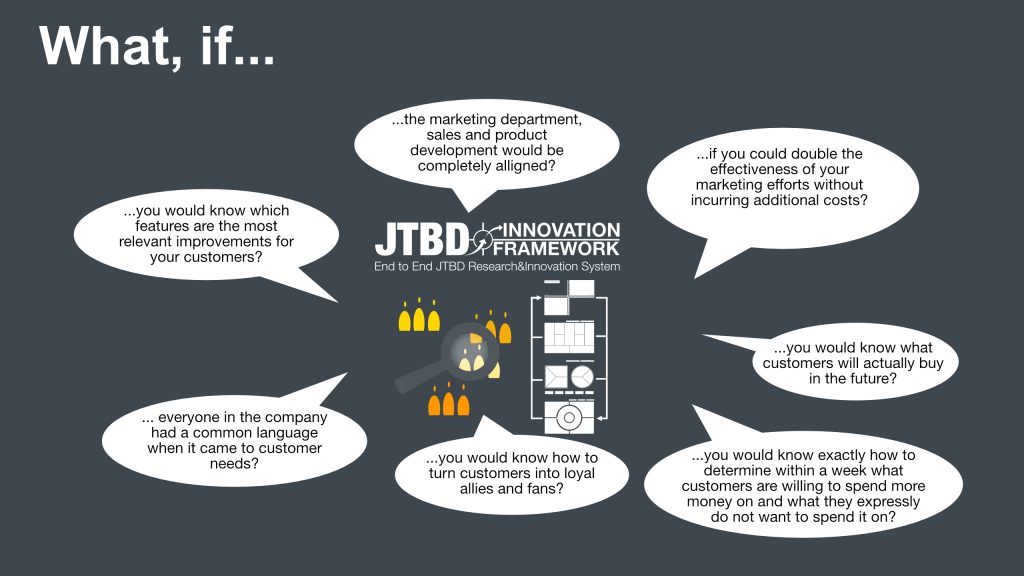
Voices of participants :
“Right from the start, I realised how valuable qualitative research and especially the Wheel of Progress in combination with the channel phase model is for strategic business decisions. It has revolutionised our corporate communication, customer approach and sales strategy. A real game changer!”
Nils Wloka – CPTO Steadybit
“The principle behind JTBD, developed at Harvard University, completely shifted my perspective on market needs and customer loyalty. But no one there showed you how to actually apply it. Peter Rochel’s JTBD Innovation Framework changed the game in that respect.”
Mani Padisetti – Co-Founder, Digital Armour
“The clear presentation of the JTBD methodology and the expertise during the interviews gave us valuable insights to optimise our product development and better address customer needs.”
Michael von Pidoll – TÜV Rheinland AG
“As a founder and experienced product developer, I was impressed by the systematic approach of the JTBD Interview Sprint. In just 2 days we learned more about our product and our customers than in the last 3 years. This knowledge has enabled us to make our advertising campaigns three times more effective while improving our product.”
Stefan Hück – Founder of Mantrafant
There are still a few places left on the Jobs to Be Done online course, the next live online masterclass where Peter Rochel teaches the framework exactly as we implement it for all our clients, from start-ups to corporations, as well as ourselves.
Imagine experiencing a whole new level of data-driven customer focus that includes everything you need for marketing, product development, sales and strategy.
The next Mastering JTBD Research& Innovation Online Workshop starts on 10.10.2023. If you still want to join us, then arrange an online information session now, or give us a call.
The individual modules take place on the following days, on Tuesdays and Fridays, starting at 9:00 a.m. each day.
Any more questions?
Are you looking for an effective method for fuzzy front end research and innovation management? Then our latest podcast episode “Unlocking Innovation: Fuzzy Front End Research with The Wheel of Progress” is for you.
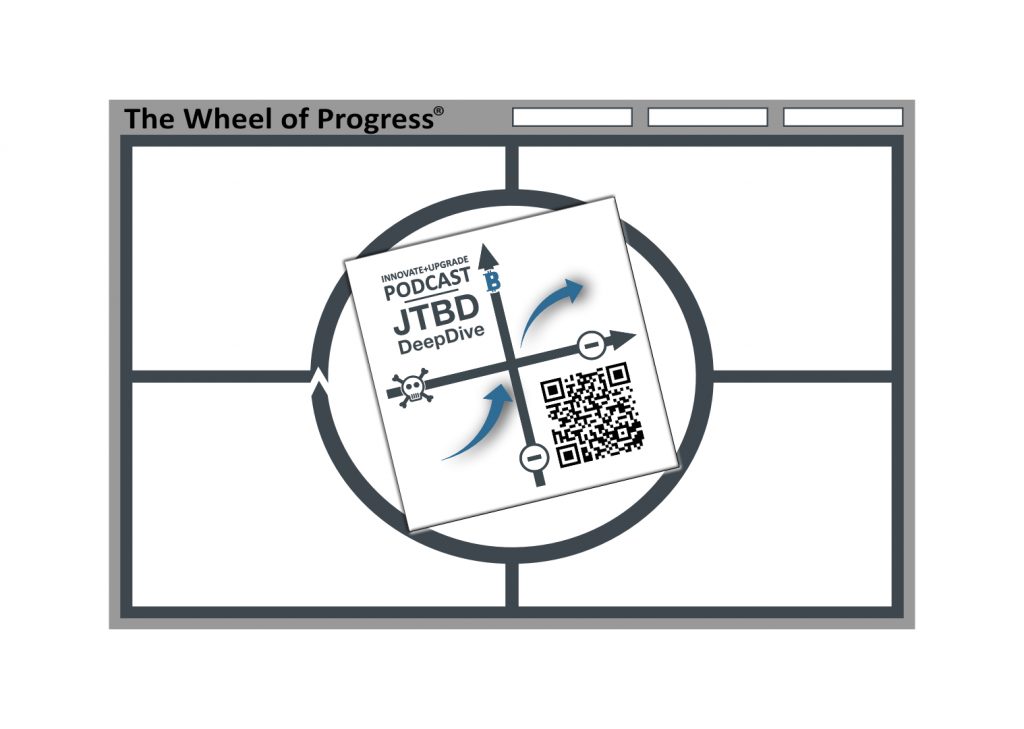
00:00 Intro
02:51 Classical music and JTBD
10:07 Resilient Fuzzy Front End Research
23:32 Wheel of Progress in tool comparison
32:14 Classical musicians do want to make money after all
36:24 Manageable effort
38:24 Wow and love letters
45:13 Praise and more JTBD Science
47:29 Dates and Get-Out
Fuzzy Front End refers to the uncertain and less structured initial phases of innovation development. Our podcast episode highlights how the Wheel of Progress® can be used in this critical phase.
The Wheel of Progress® is a comprehensive framework that provides an in-depth understanding of consumer behaviour. It is an indispensable tool for modern companies that want to research and innovate effectively in the fuzzy front end phase. Get to know the tool and its application in detail in our training courses.
The framework is both theoretically sound and practically applicable. It is ideally suited for data collection and analysis in fuzzy front end research and provides a structured approach to innovation processes.
If you want to take your fuzzy front end research and innovation processes to the next level, be sure to listen to our podcast episode “Unlocking Innovation: Fuzzy Front End Research with The Wheel of Progress”!
In a world teeming with unceasing change and advancements, innovation stands as the bastion of economic evolution. Peter Rochel, Co-Founder at UTXO Solutions and the seasoned CEO and Jobs to Be Done connoisseur at Oberwasser Consulting, alongside Alexander Moths, disentangle the complex realm of innovation in their enlightening podcast, “Innovate & Upgrade”. This article, blossoming from their profound dialogue, traverses the core aspects of innovation, its crucial role in strategic business development, and provides an in-depth examination of diverse innovative strategies pivotal for achieving corporate triumph.
Often misconstrued as synonymous with invention, innovation is indeed a concept with multitudinous dimensions. It surpasses the birth of fresh ideas, enveloping the realization and materialisation of unique products, services, and processes that inject value. To truly grasp its essence, one must see innovation as the triumphant harnessing of newfound ideas in an ever-mutable market.
For organisations pining for distinction, innovation is the wellspring of sustenance. It’s the transformative agent that reshapes industries and molds our daily existence. Examples of triumphant innovation are profuse, each narrating tales of revolutionary alterations in societal fabric and progressive enhancements in human life.
The essence of strategic business development is interwoven with the quest for enduring success. It’s the art and science of cultivating internal value within an enterprise, aligning the offerings with the pulsating needs of the consumers, and magnifying core competencies to attain resilient growth. It’s a collection of customised practices aimed at bolstering organisational fortitude and versatility in the fluctuating business ecosystem.
Value proposition design emerges as a vital element in the developmental journey of products and services. It’s the meticulous craft of shaping offerings that resonate deeply with customer desires. Multisensory marketing, a parallel significant concept, beckons customers through diverse sensory interactions, escalating their engagement and kindling an unwavering allegiance to the brand.
The Jobs-to-be-done theory acts as the compass in navigating the sea of consumer needs. It unearths the underlying motivations propelling customers towards a product or service, furnishing insights into their behaviours and enabling companies to mould solutions that mirror consumer aspirations and needs accurately.
For corporations with a zeal for leading the innovation frontier, the embrace of flexibility and incessant refinement is crucial. The infusion of a methodical innovation blueprint and heeding customer voices can cultivate a fertile ground for invention and progression, positioning businesses at the zenith of their domains.
In the contemporary business milieu, the amalgamation of innovation and strategic business development stands as the foundation of enduring corporate triumph. The wisdom imparted by Peter and Alexander serves as a prism for businesses to introspect and refine their innovative pursuits, ensuring alignment with the market pulses and consumer anticipations.
Ponder over the discussed concepts and evaluate their incorporation into your business paradigms. For deeper insights and bespoke consultations, connect with Peter Rochel and Alexander to unearth tailored solutions that align with your business objectives.
Infobox:
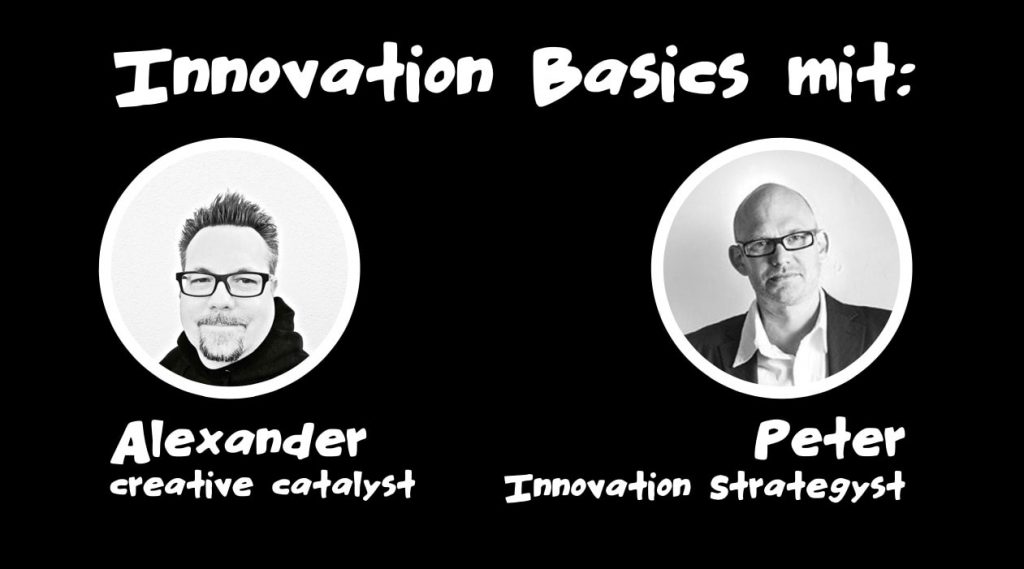
Understanding innovation requires us to unravel its multifaceted nature. It’s not merely about concocting unheard-of ideas but about breathing life into them, transforming them into tangible value-adding entities. The beauty of innovation lies in its applicability; it’s the vehicle that drives new ideas to fruition in the relentless tides of market evolution. In this relentless pursuit of progress, innovators like Peter and Alexander are the navigators, illuminating the path for businesses to follow, ensuring they don’t just float but sail with direction in the vast ocean of possibilities.
In the grand tapestry of economic development, innovation is the thread weaving through, connecting disparate elements into a cohesive whole. It’s this transformative essence of innovation that empowers companies to transcend conventional boundaries, to adapt, evolve, and meet the multifarious demands of the consumers with finesse. It’s like a master chef, concocting recipes that not only satiate hunger but tantalise the taste buds, leaving an indelible mark on the culinary world.
In the realm of enduring success, strategic business development composes the melody of growth and resilience. It’s a harmonious blend of identifying and seizing opportunities, aligning the symphony of business needs with the rhythm of consumer desires. It’s about orchestrating the strengths of an organisation to compose melodies of sustainable growth, ensuring the music never stops, even when the market dynamics play a different tune.
Delving deeper into strategic business development, we find it’s a meticulous craft of tailoring strategies, of stitching together practices and methods that fit the unique contours of an organisation. It’s akin to a tailor, measuring, cutting, and sewing, ensuring the final piece is not just a garment but a reflection of individuality and preference, resonating with the wearer and the onlookers alike.
In the journey of product and service development, value proposition design is the compass guiding towards destinations that echo with customer aspirations. It’s about chiseling the raw stone of ideas into sculptures that speak to the consumers, that resonate with their desires and preferences. And then, multisensory marketing enters the scene, painting these sculptures with hues of experiences, touching the customers through sights, sounds, and sensations, making the interaction not just a transaction but a memorable journey.
Multisensory marketing is the choreographer, orchestrating a dance of interactions, engaging customers in a ballet of experiences. It’s about creating a symphony of sensory engagements, where each note, each movement is a step towards fostering a deeper connection, a more profound loyalty to the brand. It’s not just about the dance; it’s about the emotions it evokes, the memories it creates, transforming a brand interaction into a human experience.
The Jobs-to-be-done theory is the archaeologist in the world of consumer needs. It’s about excavating the layers, uncovering the relics of motivations and behaviors, understanding the stories they tell. It’s about solving the mysteries of consumer choices, deciphering the enigma of their preferences, allowing businesses to build not just solutions but monuments that stand the test of time, reflecting the true needs and expectations of the consumers.
By employing the insights gleaned from the Jobs-to-be-done theory, businesses can become the architects of solutions that are mirrors to consumer aspirations. It’s about constructing edifices of products and services that are reflections of consumer needs, that speak the language of their desires, ensuring every interaction is a step towards building a city of loyal customers and lasting relationships.
In the dynamically evolving business landscape, innovation and strategic business development are the architects and builders of sustainable corporate success. The insights and wisdom from experts like Peter and Alexander are the blueprints, guiding businesses in scrutinizing and refining their approach to innovation. It’s about ensuring every brick laid, every structure erected is in harmony with the market rhythms and consumer pulses, creating a skyline of corporate success that is a testament to the enduring spirit of innovation.
Reflect, introspect, and integrate the discussed concepts into the architectural designs of your business strategies. Reach out to the maestros, Peter Rochel, and Alexander, to explore the realms of possibilities and erect tailored monuments of success that resonate with your business ethos.

In this podcast episode of Innovate & Upgrade, Peter Rochel talks to Andreas Streb, Deputy CEO of Volksbank und Raiffeisenbank Bayern Mitte, about disruptive technologies and specifically the relationship between Bitcoin and banks. The conversation revolves around the question of whether Bitcoin poses a threat to the business model of banks and how established companies should deal with such technologies. As the deputy CEO of a bank that proactively engages with Bitcoin, Andreas Streb shares his perspective on the topic and explains how this technology landed on his screen and why they engage with it.
00:00:00 Intro
00:02:47 Why Bitcoin is important for a bank
00:04:51 Overlooking the subject
00:09:45 Understanding Bitcoin First
00:16:17 Retain customers
00:21:09 Bitcoin in the business model
00:24:49 Note Bitcoin Business Innovation Bootcamp
00:25:57 Therefore focus on Bitcoin
00:32:18 How the market responds
00:36:48 Creating value for customers
00:45:30 An own Bitcoin trading portal
00:50:30 Financing experiments
01:02:24 Bitcoin, Crypto, Speculation
01:09:19 What banks should do now
01:11:37 Get Out
In today’s digitalised world, banks must constantly find new ways to satisfy their customers and remain competitive. One disruptive technology that has attracted a lot of attention in recent years is Bitcoin. Few banks are sufficiently active with the cryptocurrency and recognise its potential. In this article, you’ll learn why Bitcoin is a vital opportunity, not a threat, for banks.
A common argument against Bitcoin is that the cryptocurrency threatens the traditional business model of banks. In fact, Bitcoin offers many advantages for users, such as the ability to operate independently of banks and states. But for banks, Bitcoin also offers opportunities that need to be exploited.
Andreas Streb, Deputy Chairman of the Board of Volksbank und Raiffeisenbank Bayern Mitte, talks about the relationship between Bitcoin and banks in our interview. He explains how his bank started to get involved with Bitcoin and what offers it has developed for its customers.
VR Bank Bayern Mitte has realised that it should provide a comprehensive range of Bitcoin-related services for its customers instead of sending them to other providers. It has developed a trade portal to strengthen customer loyalty and explore new business areas. The Bank emphasises a structured approach to innovation to increase the likelihood of success.
Bitcoin offers banks the opportunity to expand their business model and open up new sources of revenue. The cryptocurrency enables banks to expand their services and position themselves as competent contacts for all their customers’ wealth matters. Bitcoin is also an incentive for banks to expand their expertise in blockchain technology, which is seen as important and will play an important role in the future.
Resume
Bitcoin is a disruptive technology that offers many challenges and opportunities for banks. Those banks that get to grips with Bitcoin and build up expertise have the chance to strengthen their customer loyalty and explore new areas of business. Bitcoin is not a threat to the business model of banks, but an opportunity that should be seized.
The German-speaking Bitcoin landscape is growing, is bustling and very productive. How are you supposed to keep track and find the right podcast(s) for you?
The hosts of 18 Bitcoin podcasts from all over the German-speaking world asked themselves the same question and met in Leipzig in mid-March for a working and networking meeting and recorded a joint and congenial live mega-mashup Bitcoin podcast in front of an audience in the evening – while everyone was there.
In a total of six rounds, the hosts of three Bitcoin podcasts compete with each other (sometimes also against each other) to introduce themselves and/or the others as aptly and entertainingly as possible.
Whether it was successful, what came out of it and whether the hosts were able to inspire the audience on site? Listen for yourself!
00:00:00 Intro
00:01:31 Swiss Bitcoin Conference
00:02:40 Disclaimer
00:05:48 Welcome
00:08:31 Round 1 – Sound Money Bitcoin Podcast, Nodesignal, Einundzwanzig
00:18:27 Round 2 – BTC Echo Recap, Orange Relationship, Was Bitcoin bringt
00:35:26 Round 3 – Bitcoin Bibliothek, Bitcoin verstehen, Innovate + Upgrade
00:52:39 Round 4 – Blocktrainer, Einemillionsatoshi, Pleb’s Taverne
01:09:55 Round 5 – Der Bitcoin Effekt, Konsens & Nonsens, Shield of Satoshi
01:28:00 Round 6 – Bitcoin, Fiat, Rock ‘n’ Roll, Honigdachs, Münzweg
01:45:40 Farewell

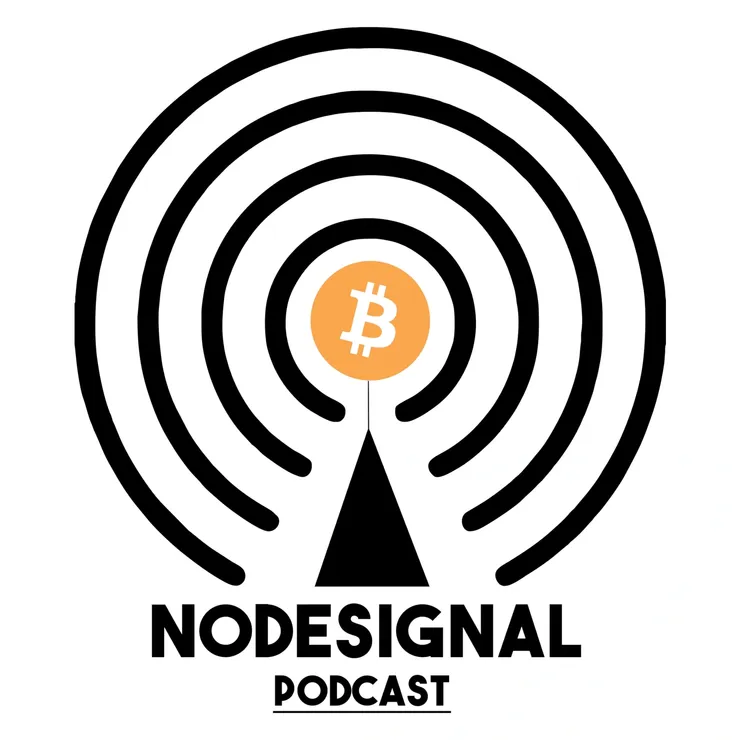
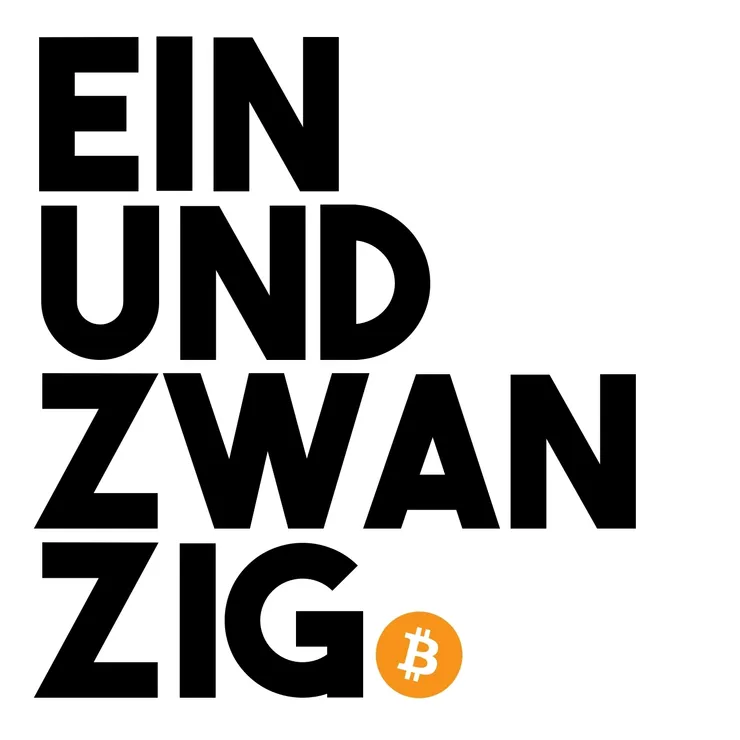
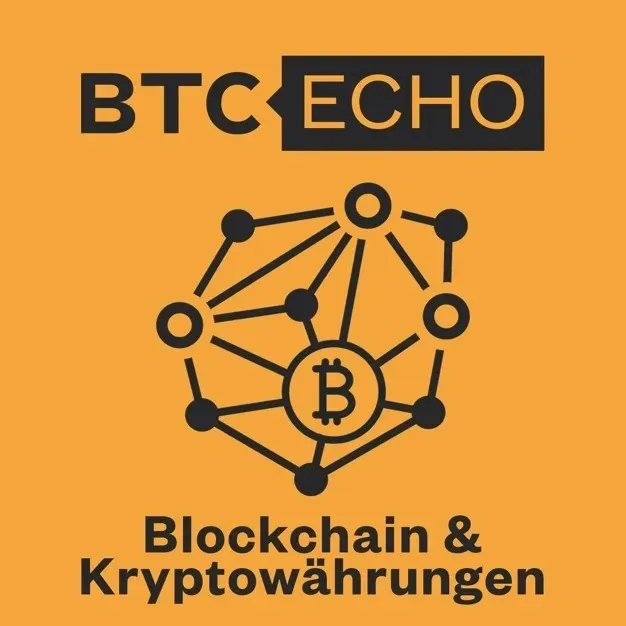
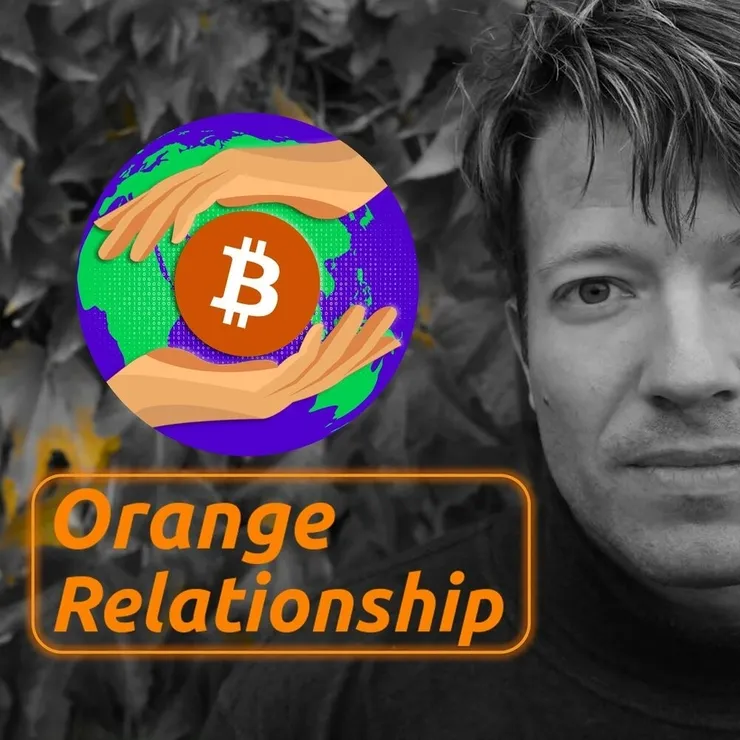
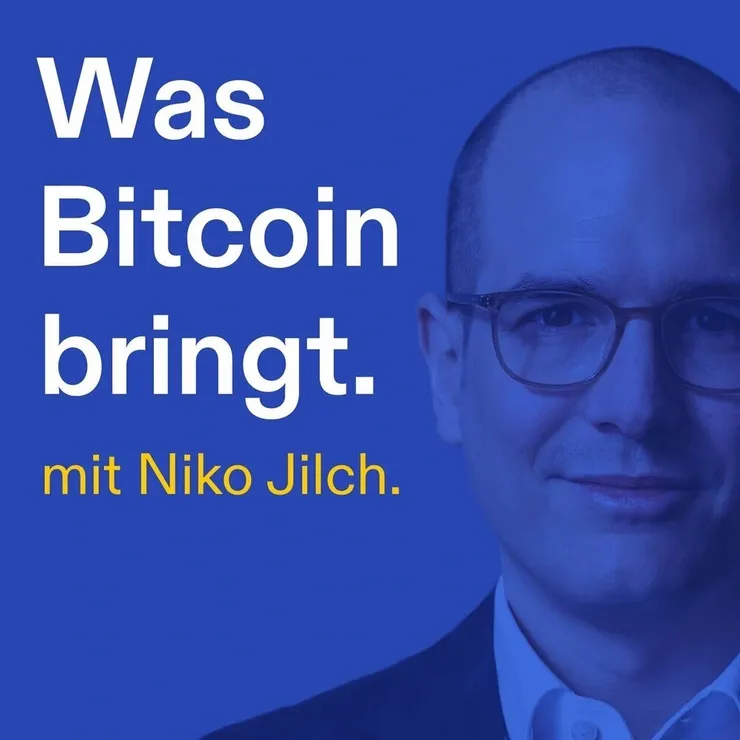

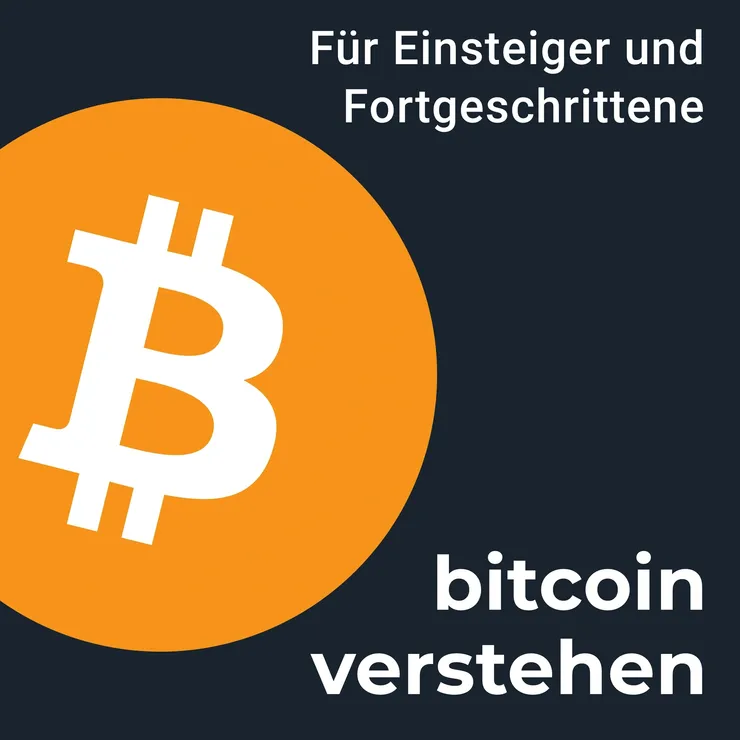
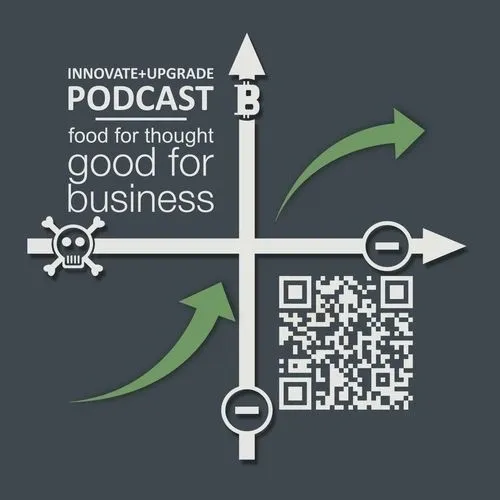

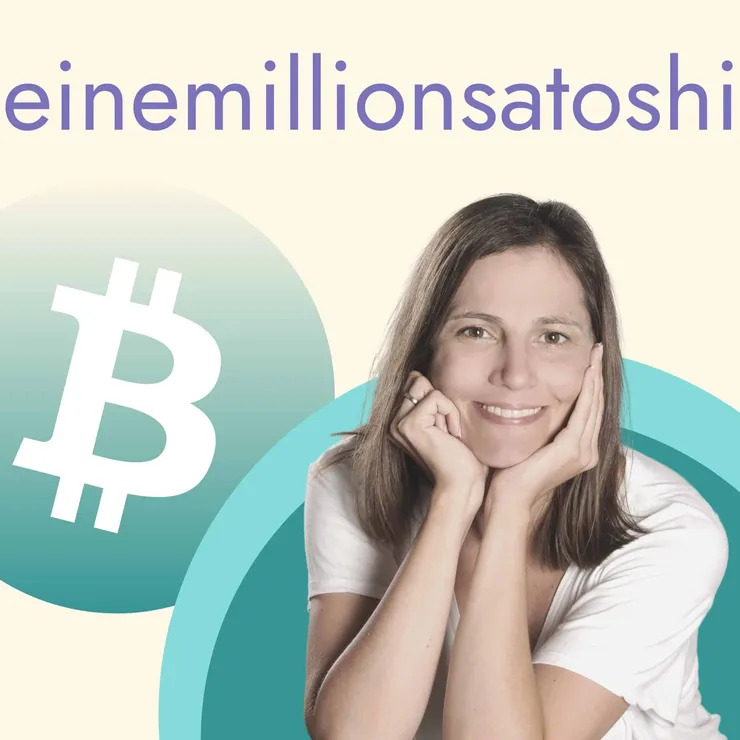

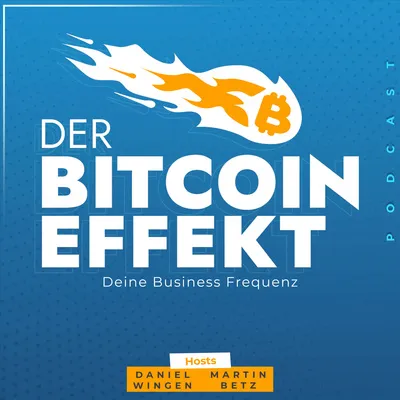
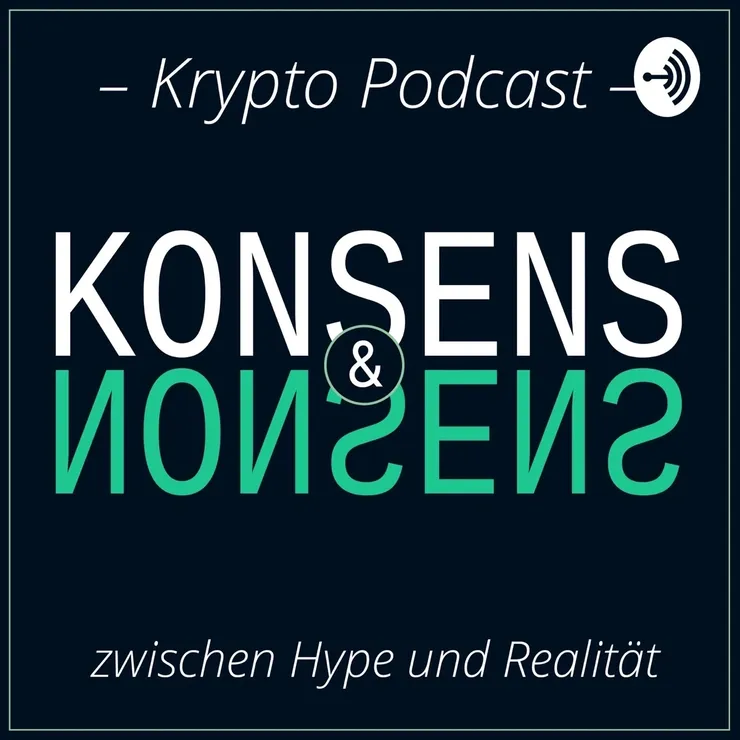

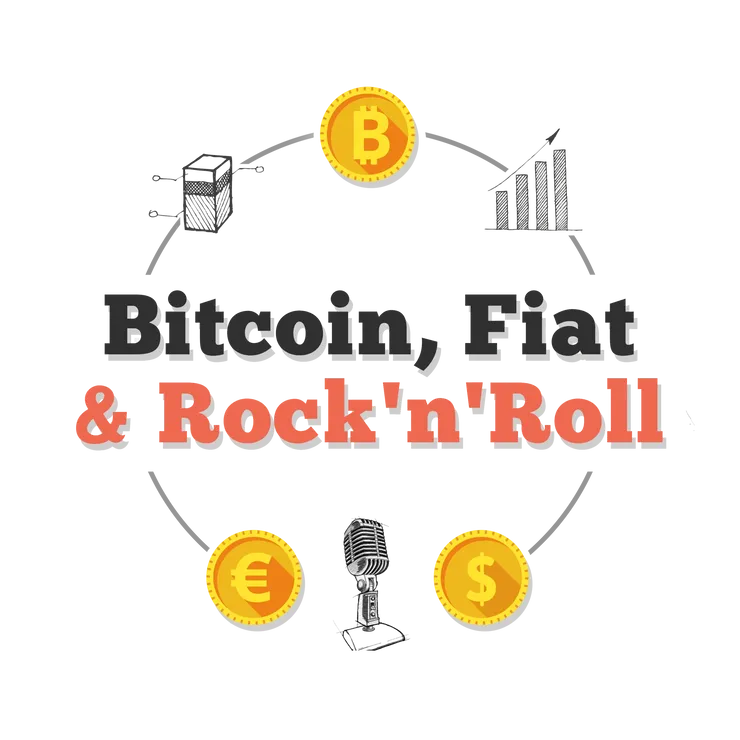

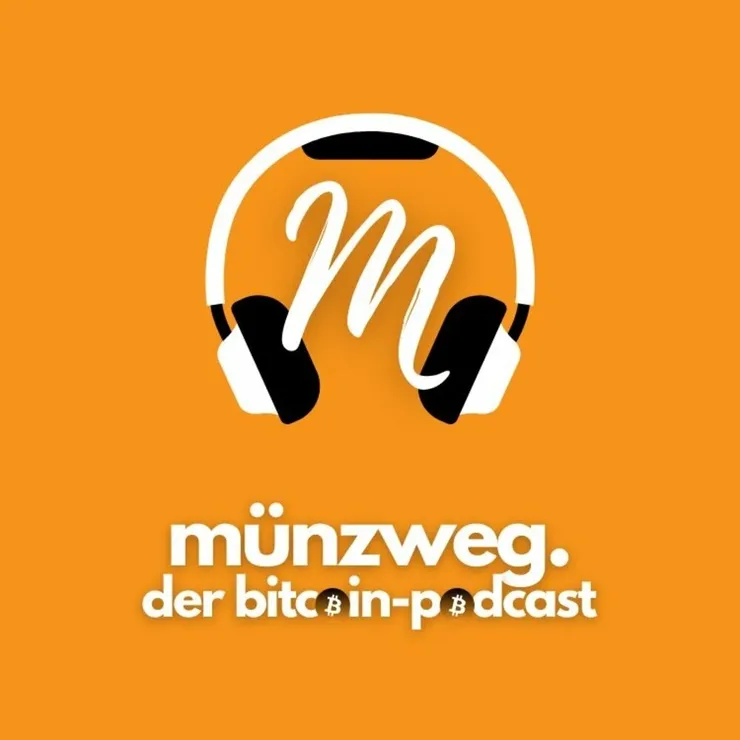
The Jobs-to-Be-Done (JTBD) method is a powerful tool to drive innovation and transformation in organisations. A crucial success factor for JTBD projects is well-conducted interviews with the right candidates. In this article we will give you tips and tricks on how to find the right interview candidates for your JTBD interviews and how to prepare them optimally.
In addition to these basic tips, there are some helpful tools that can assist you in recruiting interview candidates. For example, we have developed special screener cards for candidates. If you want to try them out, just drop us a line.
You can also get an idea of the results of a JTBD kick-off workshop by visiting our open source JTBD on Bitcoin project on our website. Here you will find a mural board that shows how the best candidates for such a project were determined.
If you want to run such a workshop yourself for identifying suitable candidates, check out the Company Innovation Toolbox on the remote workshop platform, Bordle.io. Here you will find a free template for mural boards for this type of kick-off meeting.
Overall, effective recruitment and preparation of interview candidates for JTBD projects is critical to their success. By following the tips above and using the tools presented, you can increase the quality of your interviews and thus achieve better results for your company.
Finally, we encourage you to take the next step towards successful JTBD projects. If you are now thinking, “Hey, I want to drive innovation and transformation with the Jobs-to-Be-Done method and attract enough enthusiastic, paying customers as well as committed employees who would like to do a great job with me on a long-term basis”, then don’t hesitate any longer and contact us.
We are happy to help you achieve your goals by offering tailor-made workshops, sprints and trainings for you and your company. It doesn’t matter how big your company is or what industry you are in. Our experts are available in German, English or Spanish.
Just call or email us to find out more about our offers and to book a Jobs-to-Be-Done workshop. We are looking forward to a successful start together with you and your team!

In this episode we dive deep into the topic of Jobs to Be Done and learn about the challenges, good frameworks and misunderstood tools that exist in this area. Our host Peter Rochel, one of the most experienced JTBD practitioners in the German-speaking world, has Jobs to Be Done researcher and product developer Jan Milz as his guest. Together they will give you valuable insights into the world of product development and research and show you how to take products to the next level by applying JTBD methods. Look forward to an inspiring and possibly a little nerdy episode that will help you understand your customers better and thus develop more successful products.
00:00:00 Intro
00:02:06 2013 from Value Proposition Canvas to JTBD
00:17:30 Context creates Value – not Features
00:33:24 Hypothesising Research vs Confirming Reserach
00:42:14 The role of mandate clarification
00:49:20 War of the JTBD Righters
01:07:48 The JTBD practical problem with the transfer
01:12:42 JTBD Retreat
01:19:00 Context makes the Value Proposition Canvas
01:24:14 Get Out
The integration of jobs-to-be-done (JTBD) research (in the sense of market and marketing research) into the product development process is an exciting and promising development. Companies that use this method can not only remain competitive, but also develop innovative products that meet their customers’ needs.
The idea behind JTBD is simple: customers buy products to do a specific goal or job. By understanding the needs of the customer and identifying the jobs they need done, a company can develop products that meet those needs and get the job done optimally. JTBD research enables companies to develop products that focus on the specific needs of their customers and thus achieve better results and higher customer satisfaction.
Another advantage of JTBD research is that it has a higher success rate in product development. When companies base their product development on assumptions or guesswork, there is a higher risk that the final product will not meet the needs of customers. By using JTBD research, companies can ensure that they develop products that actually meet a need.
One example is Apple’s iPod. Apple did not invent the concept of the MP3 player, but they have understood the job of enjoying music better than their competitors. Apple has put the focus on the user’s goal, which is to listen to music, and designed a product that is simple and easy to use to do the job in the best possible way. The iPod became a huge success and changed the way we listen to music.
Overall, the integration of JTBD research into the product development process is an exciting step towards innovative and successful products. Companies that use this method can ensure that their products meet the needs of their customers and thus achieve higher success rates and customer satisfaction.
Welcome to Innovate & Upgrade.
My name is Peter Rochel and this is about tools, methods and practice of strategic business development.
It is about Business Model Design, Jobs-to-Be-Done, Purpose and Progress, Exploration, Exploitation, Innovation and Transformation.
Because all of this is inextricably interwoven and determines the future of companies.
In your company too.
Glad to have you with us.
Today it’s about jobs-to-be-done research and, above all, transfer.
That means transfer in the sense of, what will actually become of this research?
How does this actually turn into a better product, better marketing or a better business model?
It’s probably going to be a bit of a nerdy deep dive, I would imagine.
Because my guest today is Jan Milz, a computer scientist, lean product manager and jobs-to-be-done researcher since 2013 and a member of the Oberwasser Consulting team since the beginning of this year.
Hello Jan, have I forgotten something?
Jan: Hi Peter, you’ve got that quite well, you could perhaps have saved yourself the computer scientist.
Peter: It still says so on your LinkedIn profile.
Jan: Yes, that was a long time ago.
Peter: Okay.
Jan: But yes well, I might have a technical background somewhere.
Peter: Yeah, tell me, how did you get into jobs-to-be-<
What happened in your life in 2013 that this suddenly came up for you?
Jan: Good question.
That was at Xing back then.
I had once made a foray into permanent employment, so after I had started to become self-employed in the early 2000s, during my studies, I came at some point along my path of all the freelancing and what I was doing at the time, to the opportunity to try out permanent employment.
That was at Xing.
I was the product owner for the homepage from 2013 to 2016.
And that’s when we in the team got the nice task of carrying out a so-called discovery.
And yes.
Peter: What is that supposed to be? – What is it?
Jan: Discovery at Xing meant that we would work on a topic for three to six months and then we would be done with it and would be able to justify why certain features or sub-products were now being launched on the platform.
So that was so common, that’s a good thing to do a Discovery before the launch.
And that’s how we were in these processes.
That is, somehow it was common practice there to carry out product discoveries over a longer period of time.
Yes, and that’s when we met in the team, basically it was with Nickel back then (Nickel Blaase, that’s a good friend of mine since then, since we were in the team). And we started to ask ourselves the question, yes, how do we do that now?
We want to find customer benefits somehow, presumably in our Discovery.
And not just do it for a few months now and then launch something, but it should somehow have a hand and a foot and we also want to improve something for our users and customers.
And that’s when the whole jobs-to-be-done thing came to my mind.
And at that time, there was such a thing, I mean, really back then, that was a long time ago.
Ten years ago almost, so pretty much exactly.
There was then a so-called Jobs-to-Be-Done Handbook, written by Bob Moesta and Chris Spiek and, I think, Ervin Fowlkes Jr. or so it was called, was issued.
And that promised guidance, how do you actually do that now?
That’s what we’ve been…
Peter: That was actually the only manual that existed at the time.
So a title like manual, so there were at least a few tools in there and it said roughly sketchily how you could or should use them, I think.
Jan: Exactly, they have, so if I understood correctly, they have….
Bob Moesta has a company called Rewired Group or Rewired…
I don’t even know what they’re called, Corporation or something.
Peter: Yes, Rewired Group, I think.
Jan: And they wrote this manual out of practice, out of their work.
And we just tried to explain to people, yes, how does that work?
So first of all, what is Jobs-to-Be-Done?
And then they introduced frameworks there, like the so-called timeline and the forces model.
And they explained how to conduct such research in the first place. So how does one do interviews? What is the specific questioning technique?
That I just start with the moment of the decision to buy and then ask myself back into the individual purchase story or into the individual story of a subject until I have really understood this story down to the last detail.
We’ll come back to that in a moment, how it all works.
But then we just…
So because you asked, why was this now in my life the moment for Jobs-to-Be-Done?
It was simply…
Yes, we had a certain Struggle.
We were supposed to do a discovery and were looking for helping frameworks to support us in our discovery task of finding customer value.
So, what tools can help us do that here?
Peter: So, very short interruption.
I forgot to make an announcement at the beginning that I really wanted to get rid of, because otherwise it might be too late.
There will be a first Bitcoin Podcast Summit on Saturday 18 March in Leipzig and I will meet with more than ten other Bitcoin podcast hosts from German-speaking countries, i.e. people who produce podcasts that focus on Bitcoin from time to time.
And this is a working meeting for us.
In the evening there will be a big party, which is open to the public, and there we will then produce a live mega-mashup podcast on the topic of Bitcoin with all the hosts present. And of course with a party afterwards.
This party is sold out, but we are allowed to bring two people and invite them to be put on our guest list.
So if you think I’m going to be in Leipzig anyway and I’ve always wanted to be there, then get in touch with us.
It’s first come, first served. That means the first ones who get in touch and say, hey, give it to me, I’m in, I’d like to go there, get in touch with me, podcast.oberwasser-consulting.de. And the first ones who come forward, we put them on the guest list.
And now we continue in today’s episode.
That was also the time in 2014 when Value Proposition Design by Alex Osterwalder came out in German. 2013, I think, in English first.
And they have openly experimented with it before.
And I think that was the moment when this term Jobs-to-Be-Done somehow spilled into the mainstream of the UX community.
Was that also related to that or how did that end up on the note at Xing now?
Or did the idea actually come from you?
Jan: So from Xing itself, I’ll say this casually now, had nothing whatsoever to do with the topic of jobs.
At Xing, you can imagine that it was already a big place back then, 500 plus people, and then at some point, while I was there, I think they grew by another 500 or so. I don’t know what it looks like there today.
But it’s a huge apparatus and you have at the bottom, I say in quotes, at the bottom kind of, so that’s where you have the teams and they do the real work.
Then you have an organisation, as you know it.
Basically, it was a classic matrix organisation, without wanting to judge it now.
And in the teams, there was just culture, product management, culture.
And the self-image has always been that we actually solve our own problems in our own team, because Xing has always been divided into so-called dedicated standing teams. And each team was basically responsible for its own product.
That’s why it was also our task to then think about how we do Discovery now.
And before Xing, I came from Business Model Design, so I also did a kind of workshop seminar with Osterwalder, which I think you also told me about, so I knew Business Model Canvas. And I also knew the Value Proposition Canvas kind of like that, but had never used that.
And that was hanging in our room, we had a discovery room in front of the team space, there was another space where the walls, there was a sofa in it, and the walls were covered with colourful stickers.
And that’s where we did our creative work. And there the thing was also hanging on the wall, in fact, the Value Proposition Canvas.
And at that time, yes, it was hanging there, and we also tried to work with it.
And it also says on the right, Customer Jobs, with the S.
And yes, the relationship between one and the other has never really become clear to me in all these years.
Although I think Osterwalder and the ReWired people actually did a workshop together back then.
There’s a Switch workshop or something.
Peter: Yes, there are also videos from Harvard Business School where Bob is a lecturer, I think, and Alex Osterwalder is sitting in the front row. But these videos also exist of Alex with Clay Christensen. And then again with Toni Ulwick.
Well, he seems to have actually looked at everything. All the flavours of jobs-to-be-done that were around at the time, if that’s even the case, but yeah, it is, it’s all about customer language. And if customers attribute it all to the same thing, then you have to live with it somehow.
Jan: Yes, now back to Xing.
We just took this, this framework, I’ll call it.
And we had that, or I was lucky enough to have a really good researcher in my team at that time as well.
These could be borrowed from the central research laboratory, I would say in inverted commas.
Do you have support?
I need someone to help me in some way.
And then there were basically three of us and we actually tried to conduct these kinds of interviews and tried to describe, yes, on this kind of job level, what do we see here for, yes, let’s say, what do we see here for jobs maybe, for contexts, for use cases, whatever.
So that’s where we tried our hand at it.
Now, looking back, we did job-to-be-done type research, so to speak, but we didn’t ask the question, why did you choose Xing or why did you buy Xing perhaps as a premium member, but rather we took parts of the framework and underneath it tried again to actually understand usage.
That is, today I would say that this was not a valid, in quotes, valid JTBD research at all.
It was more like, what methods do we have that can help us in our discovery?
So we took that and we also tried the Value Proposition Canvas.
But in the end it hung on the wall and there it hung longer.
Peter: I know so many workshop rooms and rooms where this thing hangs.
Here it also hung, in my office it also hung for a long time, always new, but to my own things it really hung there for many years as a static poster instead of a dynamic tool for product development or service development, or whatever.
One could hardly use it.
Jan: But we always had one back then, which is what fascinated me about it from the beginning, from the beginning, and I honestly tried to find that quote again.
Maybe you know this. Maybe it was also from us.
We always had a mantra like that back then, uncover the job and the solution is obvious oder gets obvious.
Peter: Yes, yes, yes.
Exactly, that’s, I don’t know if it goes back to actually a quote by Albert Einstein, who is supposed to have once said that if I have one hour to save the world, then I take 55 minutes to analyse the problem and then the solution becomes obvious.
It may be that it has somehow been adapted from the context.
Jan: Yes, there’s also something like this, if I’m supposed to cut down a tree, I first sharpen the axe for 50 minutes and then I cut down the tree for ten minutes or so.
Peter: Yes, these are platitudes that everyone would probably just agree to without being asked and just nod off.
But then doing is more blatant than just wanting.
Jan: Exactly, for me it was like that at the time, it was a bit of a mini-enlightenment.
Hey, if I have understood this job, and for me that actually doesn’t have so much to do with how much effort I put into it, but rather the problem of the product manager is always to design the right solution, I would say so, or to be responsible for it.
And then it was just features that we shipped.
And so home page, I don’t know, two million active users every day or so, so kind of a big responsibility.
I wanted to ship the right features and not just anything.
And then came this promise that if I understood this so-called job, then I wouldn’t even have to think about this solution so much, because it actually results from what the jobs-to-be-done research delivers.
Peter: We can go straight to that beautiful drill-hole example that is used again and again. If, after your jobs-to-be-done research as a manufacturer of drills, you find out that you are actually in the business of living more beautifully or hanging pictures, the question arises: yes, great information, but how do I make a better drill from this information? What am I going to do with it?
Or do you think I’m playing a bit on this level of abstraction, where jobs often hover very far above reality and no one really knows what exactly to do with them?
Or do you mean something else?
Jan: Well, that’s, yes, well, for example, I also bought some Tesa adhesive hooks.
And I find that such a good example of an obvious solution for now this example, I want to hang a picture on the wall.
If I stay on the level, of course, that is yes, so this descending into the human psyche, I say so, so what do you want to achieve, is important for you or maybe even for others, there I can go quite deep from the drill.
I can then, at some point, come to, yes, picture on the wall.
And in our case, for example, there is this Samsung The Frame, which is the next best thing.
I don’t know if you know that one, that TV, do you know that one?
Peter: Nah, doesn’t ring a bell.
Jan: That’s a TV, it’s a picture frame at the same time.
Peter: Oh, yes, yes, yes.
Jan: So it looks like a picture frame, so supposed guests can’t tell the difference.
And he can then depict pictorial art by, I don’t know, Da Vinci or something, as a picture.
And then you go from the drill to the picture, to the TV, and then I get into a story like I kind of want to expose my kids to art or something.
Or I want to present myself as something to the neighbours.
Then I can go relatively far from the drill into people’s motivational levels.
What do they actually want to achieve in their lives?
Peter: Yes, and then people like me come along who then, or Eckhart, who then say, yes, but you know, please remember, every job has countless different possible solutions to do it better or worse.
And each solution always does several jobs at the same time.
You have the next problem of choice.
What am I going to do with the research?
So what do I make of this?
Jan: Exactly, but back then, well, that’s really, well, that’s now, to conclude with Xing, that’s really a very, very long time ago.
It was just a first use of the framework.
And for me it was essential from then on, I knew, okay, Jobs to Be Done means 100 per cent customer centricity.
Throughout history, since I’ve been a product manager, that’s been my path anyway. So I think relatively little of the provider perspective.
Peter: Why? So would you like to justify that briefly?
I totally go along with that. I have very, very clear opinions on this and I think I can explain to any entrepreneur in three seconds why this is so.
How did you come up with this? What is your reason?
Jan: I always knew that. I have always felt it.
For me, this basically became clearer again when Bob Moesta wrote this book Demand-Side-Sales one, two, three years ago now, I don’t even remember.
And he again made a clear distinction between the demand side and the supply side and also described the gap in between, that what companies offer is not necessarily what customers want.
We have actually known this since Peter Drucker wrote it down in 1964.
For me, the essential reason is that customer benefit only ever arises in a context.
So if I have any, so the quote is, context creates value.
It’s also by Bob Moesta.
That is, if I am in a context and somehow need something, then a product fits into my context.
And only then does customer benefit emerge.
This means that the offering side never knows when or is not responsible for when customer benefits arise.
It can’t be, because it doesn’t know in which contexts it could fit.
If it simply offers products in a market from a supplier perspective.
Peter: Christensen and Michael E. Raynor have already written this in The Innovator’s Solution.
That was the second book, which came after Innovator’s Dilemma.
That’s where the quote comes from.
The critical unit of analysis is the circumstances and not the customer.
So it’s not about socio-demographic data of customers to understand.
On the one hand, but it is about understanding this context precisely.
The circumstances in which people need a solution or commission a product.
Jan: Exactly, and the supplier’s point of view is, I build a Segway and offer this Segway at a market.
And then it may just be that there are contexts where this product provides Segway benefits.
But it is also possible that this is not the case.
And that, to me, is basically an example of pure provider thinking.
Peter: It’s one of the most spectacular innovation failures ever.
So it was thought of as the individual mobility solution of the future, how people will move in the future.
What it has become is a toy for people with too much money and free time for the day, who now play hockey on it. And what sightseeing in foreign cities.
Jan: The problem is that the Segway, that’s also a question that always comes up with jobs, what is actually the competitive situation?
Because you said one product can fulfil many jobs and one job can be fulfilled by many products.
If you take the latter, then the Segway is probably competing with walking and just has the problem that it can’t do stairs.
Peter: We had one of those things in the company, had one and used it for fairs, where we then drove around with it at fairs.
That was actually promotionally effective.
Every now and then, I got carried away and took it to the supermarket during my lunch break to get something to eat.
I have rarely felt so stupid as I did on that thing during that one lunch break.
Jan: I think George Bush laid down there once, didn’t feel too great about it either.
Peter: That’s on top of it.
Sandy soil has been life-threatening on these things.
I don’t know how they’ve sorted it out with the software today.
But now they’re driving around on one wheel.
Jan: If I go back there now, context creates value.
In what context is the Segway useful?
From the point of view, I want to be mobile in the city or something, there was no such context.
Today, the others solve it, these scooters like Bird or whatever, they solve it much better.
But the thing was of no use in this context.
That’s why it’s like, this provider view doesn’t make that much sense to me.
By and large, we always want to create a cycle like this.
Provider create value, but he also wants to capture it again in the direction of business results or something. There must be some kind of circular relationship.
Nikkel and I had partnership back then, we sometimes called it.
We create benefits for the so-called value partner.
And the value partner gives something back to us, for example money, data or whatever.
And the whole thing, however, is somehow a kind of eye-to-eye circular relationship.
But it is always from the demand side, it is basically controlled.
Because as a provider I can never determine what benefit is. That is simply not possible.
And that’s why you come from the demand side.
And when you have understood that, then you design the solution.
I simply start completely differently than a company that says on the supplier side, I’m now inventing this Segway.
Peter: What else plays into it, which I found exciting, Bob also said again the other day.
For your information, if you are interested in exactly how this came about in the first place, Jobs-to-Be-Done.
We have a podcast episode with Bob Moesta where we also discuss the history with him of how Jobs-to-Be-Done came about in the first place.
If you like to listen to it, I think it’s the only episode we did completely in English, except for the intro.
But to come back to that, to the issue of demand.
Bob also said, and that was another point for me where I thought, yes, of course, that’s right.
You can’t create Demand.
Demand is there and you may discover it, but you cannot create it.
And either it exists or it doesn’t.
And that’s what we have to find out.
And then to match how I can meet these requirements from the customer side, with which solutions can I actually serve them?
So what does the requirement actually look like?
Because even a Jobs-to-Be-Done Research doesn’t tell you exactly how to build a solution. He only says what the target definition is, what it looks like with the customer, if it is good.
He doesn’t explain how you get there at first.
Jan: He also says then, build it and they will come. It’s a lie.
I know it too.
I have been responsible for countless features or sub-products.
And I know exactly that it doesn’t work like that.
Peter: That’s very self-critical.
What are you…
Jan: Remove a feature from Xing.
Have fun with it.
Peter: We have never done it like this before.
Where are we going with this?
Jan: Where I once experienced that, well.
I have also worked with certain…
So, for example, even in the Xing time, there were certainly many things, yes, deployed, let’s say so, that perhaps didn’t necessarily have proven customer benefits now or that I would have derived from the demand side.
But that was also a long time ago.
And it’s hard too.
It is indeed very difficult.
Peter: What happened next?
And how did you then get into more intensive Jobs-to-Be-Done research?
You told a bit about it, so it sounded to me as if you had fallen into a bit of a rabbit hole. Where you said you found something that fascinates you very much, that makes total sense.
And yet there has always remained such a struggle, with a somewhat bitter aftertaste in that you then made an observation about yourself and also about others that often led to frustration.
Would you like to elaborate on that?
Jan: So I also had this, there is also a video course where the three people who wrote the manual explain it more or less professionally filmed.
I got that right then and there and actually got down quite a bit.
But then I also conducted sample interviews myself, i.e. in a private setting, and made sure that I improved this technique somehow.
Then the issue parked for a few years.
After Xing, I was still a product owner, maybe for two or three years in some app. Or then I had done a lot of search engine optimisation, was kind of off somewhere else.
And then it came about that I, also together with Nikkel, that we could distinguish two basic things from this, from product management, if you like. So once the topic of execution and the topic of perhaps discovery.
And so execution means I have an existing backlog and I work my way from iteration to iteration building features, features, features. That’s how I broke away from it.
And we tended to go into these early phases of product development and offered a discovery workshop.
We have that one, yeah, I don’t even know anymore, so that must be like 2018, 2019 maybe, 17, 18, 19 kind of thing. So we have offered this in-house.
We went to companies somewhere as trainers and explained or tried to explain how to do a product discovery, which we also offered to the public.
And that’s when I started to actually accept or acquire research projects as a freelancer.
That is, I was then in my freelance, so after Xing I was a freelancer again and have been ever since. That is, I am always requested in, yes, projects like that and then booked.
That is, I am always requested in, yes, projects like that and then booked.
And then I increasingly took on the role of researcher.
So the person who then actually does real interviews.
What I did before, well, and there I am, I’ll say that again, I’m just an amateur researcher.
There are also professional researchers.
But we come more from the pragmatic point of view that we say we prefer to do the research ourselves. Maybe we only do it 80 or 70 per cent really well professionally.
For this, we can actually apply everything we have heard.
In contrast, when I buy research, it may be 100 per cent good, but I can actually only apply 10 per cent.
That is our experience with studies that are procured externally.
And that’s why, since Xing, I decided to do it myself. And then I started practising interviews and got more and more involved in research projects as a freelancer.
And that’s when the topic of jobs-to-be-done came up again, because it had spread somewhere in the world in the meantime.
There were then, or there are today, several different publications on the subject, i.e. different books by different authors.
And that’s how it was with me in my environment, that the topic of jobs-to-be-one was asked for. Can you do that?
And I’m like, yeah, yay, of course I’ll do that.
Had me very, very excited that somehow this exists and that I can actually do this as a freelancer as well.
And then I’ve actually done a lot of projects in the last few years that started out as supposed jobs-to-be-done research.
But it turned out in the end that maybe it wasn’t necessarily the jobs-to-be-done that I had understood it to be at the time at Xing.
Peter: And that means, what exactly is it then?
So what difference was there?
Jan: There were indeed things that were quite classic or quite easy to resolve.
Then someone came and said, can you do jobs-to-be-done research?
Then I looked at it and the test subjects were people who had not made a purchase decision, but were users of a system. And I should explore those, how do they use a system?
And then I classified it for me more as a task analysis or something.
So what do people do with a software system?
And then I said we can do research, but the result is not jobs-to-be-done, it’s a user story map.
And that then helps us as a backlog and decision tool to build the right software, is that what you want?
Then they said, yes, that’s what we want.
So that means first describing the problem in such a way that it is for the team, well, it is always a team that needs research as support.
And first to clarify, what do you need it for now?
But there were also others, and then I could then, I did the research or we did, and in the end a story map came out and that was then also good.
But it was a problem of, I’m short on time and I want, so what’s the 20% software I need to build to get 80% impact? That was the background.
And in my mind, jobs-to-be-done is still, and that’s why we’re talking today, kind of a bigger thing.
So that maybe I can use that word innovation, if I wanted to use it that way, maybe that I can answer that with that. How do I actually do innovation and which ones then at all?
And then I had some projects where neither the clients nor the team knew what to do.
And then this research, these interviews were done. As a rule, we make ten or eight or so.
And then when we came back, often there were two of us, so doing interviews alone I wouldn’t recommend it so much, and ideally in pairs or something. Then we formulated these results Jobs-to-Be-Done artfully.
And then in the organisations, the organisations could do relatively little with it because they didn’t know exactly what to do with these results.
Peter: How did you recognise that? So how did you notice?
Jan: I recognised this simply by the fact that I had timesheets with Research and that after that the projects simply stopped.
And there were no further timesheets after that and no further commissioning in that area.
And that this whole research and the whole project has been cancelled.
That’s how I recognised it, and I experienced it not only once.
Peter: It is also, well, when you work hypothesis-based, you say, okay, we now have a question or an assumption and are now investigating it with the help of an experiment, for example with a jobs-to-be-done research, where we say, “We believe that A, B, C, and for that we are now talking to ten people”.
And we look at it and at it and we are right in our assumption if.
And it may well be that the assumption has been disproved and that this is why it is being scrapped.
Then you just say, yes, too bad, it was nothing.
But you see another reason why this has been scrapped.
Jan: First of all, I took a very self-critical look at it.
So they were just unresolved mandates in that sense.
For example, I have an example where a Jobs-to-Be-Done Research was actually named as a commission.
And when I went to the working level, I ended up with, it’s like this, at the beginning you recruit people.
That means I often have agencies that help me when things don’t really work in the house or something.
Then I ordered my test subjects, had them all scheduled, the calendar was there, the interviews were there and then we actually wanted to get started.
And then the client said, I’d like to talk again and I’d like to see your interview guide.
Peter: Classic.
Jan: And then it came out in the conversation that I don’t have any guidelines.
And then the client said, we’re not doing that project.
You’re not really a researcher.
And finished the project, so to speak.
And what lies behind that is, after all, the misunderstanding.
One of them, I thought, we are doing hypothesis-forming research.
That is, that is always the basis of Jobs-to-Be-Done for me.
That means I go into interviews exploratively and form hypotheses from them.
I want to understand the job, I don’t know it yet.
That is my basic assumption.
And if I want to explore, then that is the opposite of confirming.
And to confirm would be to test hypotheses.
But I want to create them. So ergo, a guide makes little sense in a hypothesis-forming research. Because if I want to test hypotheses, I need hypotheses first.
I’ll take those into my interview.
There is also the fact that in the user test, for example, which is a very classic confirmatory research, I take hypotheses and try to invalidate them on the basis of a prototype.
In the Jobs-to-Be-Done interview, when I say I want to explore, I just don’t have them. And that was the fundamental misunderstanding between me and the others.
And I think that was not named beforehand either.
I then asked myself, why have we now abandoned the project?
I don’t really understand it.
Peter: I think it’s all right.
So hypothesis-forming in any case, yes.
It is open-ended, yes.
Nevertheless, it is also suitable for refuting or confirming certain hypotheses of one’s own. You should be clear in advance about what you actually want.
What are the own ideas and basic assumptions?
Often this helps to park it away.
What I notice is that most people, especially now in the last three years with our pandemic and all the discussions that have been started, are not at all aware of the difference between qualitative and quantitative market research.
And the qualitative one always clarifies the why, the causality.
Why do people do exactly what they do?
How are these things related to each other?
And the quantitative clarifies how many do what, of what.
And you always need both.
And now, of course, the problem is that when I’m exploring, hypothesising, exploring with a job-to-be-done interview, then of course I also have the challenge, I’m not allowed, so if I want to learn something, I’m not allowed to imply anything.
So everything that goes in the direction of leading questions and the like, out.
Anything that is solution-oriented questions, out.
We have to ask problem-oriented questions and we have to ask fact-based questions.
And that leads to the challenge that you basically can’t create a guide for yourself.
But you have to be clear about exactly what information you need, what kind of information.
And there are already questions for that, but they are the same for all interviews.
More or less.
They don’t vary much now.
Jan: Exactly, so I’m not saying that we don’t have a scaffold or a frame.
It’s just a different one.
A guide is something like, I have a piece of paper in front of me and I go through it.
And at the end, I once had a huge conflict with another researcher, I ended up with eight interviews. And if I ask all the test persons the same questions, then I can compare them.
And then I was supposed to do interviews like that, and then I just didn’t stick to these questions. Then she got really angry because she rightly said that I wouldn’t use her because she didn’t fit into my scheme. But we also want to explore.
So again and again the topic.
And in some of these projects, it was just that they were classic jobs-to-be stories.
So there was someone who bought a product or we were researching bike leasing. And then I simply or naively assumed, okay, we want to find out now that someone is somehow buying an e-bike, for example.
That’s a good example, because I also just bought one myself at some point. What is the job of the e-bike now?
And that’s where I have my framework, which is the timeline that we got from Bob Moesta back then, where he simply renamed phases of the buying process Timeline.
The fact that buying processes take place in phases is not something that the job people have somehow invented.
What they said is that this timeline, as you also just said, just has causal connections.
That means that one step happens after the other, but it doesn’t just happen.
So purchases are not just like that, they also say that there is no such thing as an impulse purchase, but that everything can always be explained causally in each individual story, how did this buying behaviour come about.
And that’s how I approached it.
And then I just ended up with my results here, for example with the e-bike, which is now the job-to-be-done kind of thing that we found out in the different phases.
And great insights.
Now let’s kind of do this and that.
And that was another moment when this disconnect became tangible, because the customer said, “I can’t do anything with this.
That’s kind of conclusive, but we’re in a completely different mood somehow.
A classic is that I have already employed 30 people who have already started programming.
Peter: And don’t you dare say that your result doesn’t match our ideas.
Jan: This is also a classic that I have experienced in the same way. And also a quite, also a really ordered Jobs-to-Be-Done-Research.
At that time it was somehow about electricity providers or something.
So when do I buy or choose which electricity provider?
And then there was just, yes, the people, they have already started.
And I understand your problem, you have quietly hired people and they have to do something.
But why are you coming to the research now?
And there, too, the result is, and that was also, I’ll say, a straight research, so for a first round, if you do eight to ten interviews, then of course you can only deliver results within a certain framework.
But there were also such insights in there. How does it actually come to the decision for certain, what do I know, bicycles, electricity providers, whatever?
What have we found? What is customer language?
What are the events in the timeline that took these people from one stage to the next? So a pretty good package from my point of view.
But it had no connection to reality.
Some have said we’d rather do performance marketing in Google, and we don’t really need your research for that.
And the others said, yes, we are already programming.
Peter: I’m sorry if I’m stepping on the toes of one or the other, but this is the most stupid nonsense of all.
So you can do it that way, it’s just shit.
So performance marketing, do it.
If you have a working process, then that certainly brings something.
In any case, it is always the most expensive variant of what is reasonably feasible with the resources available.
Most of the time, that is money.
And jobs-to-be-done research can of course also help to expand this completely.
We also have some really great examples of this.
Here, with the example of yoga mats with Stephan Hück from Mantrafant, we have also very impressively highlighted in the podcast what is actually possible with them.
At this point, of course, I know that, but of course that is always a question of clarifying the assignment in advance.
So what is this all about?
And when they do, of course they often have things that have already been started.
And in the end, then my job or your job, our job, is helping me sell the product, which I’m already starting to build and don’t want to change, at least a little bit better.
You can do that too, of course.
Jan: And since you just said clarification of the mandate, that is of course the basic problem of my, let’s say negative experiences in the past, is an unclarified mandate, or we also like to call it mandate, because mandate is somehow so, I don’t find the word so great.
On the other hand, I have also managed to make projects fail right at the beginning through very intensive mandate clarification.
That is, if you then ask the question, what do you want with this research?
And that’s what I learned at Xing back then.
There was Britta Ulrich, who is one of the best researchers I know.
She was Head of, I don’t know, Head of Research or something.
In any case, she was the central contact person for product owners.
And she always said, yes, so what is your research question?
And I’m like, yeah, like, what research question?
Yes, why can’t you continue the project without this research?
And then there is silence.
And when you ask clients this question, it can lead them to realise, hmm, maybe we don’t really need the research.
We don’t really know.
That’s why it’s, on the one hand I did the research projects, I didn’t ask, then you end up with this, sometimes this surprise.
And on the other hand, by asking this question, I have managed to nip projects in the bud, so to speak.
And that’s kind of this basic problem, when do I commission a so-called jobs-to-be-done research?
As a customer, do I even know what Jobs-to-Be-Done means?
That is also our big problem with ambiguity these days.
Peter: Yes, I have come to believe that it doesn’t really matter whether the customer knows that or not.
I just have to understand, what does he actually mean by that?
And then clarify for me, can I deliver this or not?
Or maybe I want to deliver that or not?
Jan: And then I have also said in the past, okay, I think you need a different kind of research.
We can do that too.
Nevertheless, this jobs-to-be-done word is actually used in practice today and it is no longer clear what is actually meant by it.
That means you have a, it’s just like with the term MVP or with the term Agile, these are words that we as a product community have somehow screwed up over the years.
If you hire an MVP from me now, that can be completely different than if you go to someone else and say, make me an MVP.
And it’s the same with jobs.
So MVP is enough, I know people who say that’s a sketch of what I’m betting on.
But there are people who say, no, I mean it more literally, a minimum viable product.
But then I have proved Viable somewhere.
That is, I built a product increment in a mini-market, maybe for a few users or so, but actually proved profitability there.
And one is more like the end of a prototypical journey and the other is the beginning.
And now I say, Peter, can you make me an MVP?
So it couldn’t be further apart.
And one says, yes, I’ll do that for you.
But that takes half a year.
And the other one says, like, why six months?
An MVP is just a napkin.
I don’t understand now.
And it’s the same with jobs.
Why don’t you do me a Jobs-to-Be-Done Research?
Yes, which jobs are you talking about now?
Maybe we can go back there for a second…
Peter: Yes, we can do it again…
Jan:I am getting out of the problem that I am actually at the end of my tether, as the researcher who comes into projects, who is often not involved in the clarifying discussions.
That’s also a bit of my problem at this point.
Peter: So you feel like you’re in a place where you can’t really do much except your research.
And that can then fit or not fit.
Or what do you mean by that?
Jan: Was that a leading question?
Peter: Sure. Well done!
JanYes, so I have the problem, I have to clarify again in my work. Actually, you’re booked.
Can you do this and this?
Yeah, sure. And then, at the moment when the project begins, I have to clarify what you want in the first place. And I would have liked to have clarified that beforehand.
Peter: Yes, I know that very well.
I probably got there much earlier, in the sense that I came from a different corner. So it tends to be more from marketing and sales originally.
And maybe through my management studies I had a bit more tools at hand to cast it into such a construct.
So it started with me via distribution and sales and these demand-side sales, as Bob called it many years later.
And I’ve always tried from the beginning to pour something like that into the process.
So from the beginning to the end something is commissioned and happens and it is already clarified what is to become of it.
And then at some point I developed a process where it almost doesn’t matter where you start.
But there’s no getting around the issue of clarifying orders, because that’s exactly what it is.
And that is also in the sense of Jobs-to-Be-Done, in the sense of Jobs as a Progress.
So that is, where is the progress that my client, my customer wants to make and where can I start there.
And if I now have a Jobs-to-Be-Done framework, concept, method, whatever, and an idea of it, then it is for myself, I have noticed, I have my idea of it and I find this concept absolutely fascinating, totally sensible and logical. Starting with the Innovators Dilemma, for which the Jobs-to-Be-Done theory, which is not a scientific theory in the true sense, but a thought construct by Clay Christensen, is a very, very elementary, important basic building block.
And then we developed an interview system that makes it possible to get more or less everything out of one and the same interview that you need for, help me to sell the junk I’m building here anyway, up to, how can I get out the back, once I’ve established that what I have here isn’t really that cool for what customers really want and need and want, to make a better product in the next iteration anyway.
Whether they want that or not is something the customers have to decide for themselves.
And yes, then it came to this, you have already started twice now, that then also in this time, 2015, 16, 17 approximately, at the edge, this jobs-to-be-done war somehow started, for the jobs-to-be-done nerds here, where then the big debate started, what is now, who is actually right now, with his interpretation of jobs-to-be-done, what then came of further difficulties for you? Or what is the difference at all?
That’s from an expert for experts, there used to be this column in Titanic, I don’t know if that means anything to you.
Peter: Yes, there was at some point, I heard that too.
Sonnenborn was still editor-in-chief at the time, I think.
Jan: Yes, this is really the deepest job-to-be-done, I say community, but exactly, at some point a kind of bashing started on Twitter, where one person claimed that I do the right jobs-to-be-done and the other said, no, I do it.
It even went so far that one of them, I think, actually maintained a fake profile where he discredited the other one and so on, so quite badly, it went on for, I know, a year or two.
The people who did that, that’s where it came from, there’s a guy called Alan Klement, or what do I think of him, whether that’s how you pronounce him, Clement?
Peter: Yes, Alan Klement.
Jan: The basic problem that we have, and I believe that this is what drove him, is that we received this handbook in 2014 with a timeline and a forces diagram.
And then we got this course, and that’s all we got, though, as practitioners.
And we have to, want to, somehow then also apply the work practically.
Then we got a value proposition canvas from the other one, and then you sit there and are supposed to do work, product work.
And I think that Alan Klement simply tried to put into practice what Clay and Bob, because he also worked with them, what they meant by that, to make it more applicable.
For himself and perhaps for others.
And then at the same time there was a, yes, you, tell me.
Peter: Yes, I turn up my nose, you can’t hear that now, but I know the background to this whole number, how it started with Alan Klement and for whom he actually did what kind of work.
And what went on in the back room actually only leads me to find this person, although I don’t know him at all, extremely unsympathetic.
Nevertheless, he had some quite good thoughts on the subject out the back.
But that’s a whole other story.
Go on, what, so the attack was then against ODI and the Ulwick faction.
Jan: And then there’s the other one, called Toni Ulwik or Aluwik, I don’t know how he pronounces it.
And he has been doing innovation since, I don’t know, the very beginning, he has established his own innovation process, ODI, Outcome Driven Innovation, and has also written a book about it.
Peter: We’ve already done a podcast episode on this with Martin Pattera, where we looked at this.
Jan: At some point he began to claim that he had invented and coined the term Jobs-to-Be-Done.
And that is a bit of our problem at this point.
And then Klement also, Klement then countered that.
Peter: I guess he didn’t quite, while now, been a bit clumsy about how he did it maybe.
Jan: And while the people who had coined Jobs-to-Be-Done at the time actually stayed completely out of it, Clement somehow picked up on it and then started a kind of argument on Twitter against Toni Ulwik or with Toni Ulwik.
So really unspeakable and quite embarrassing.
But what lies behind this is that one, basically, there are two, I would almost say diametrically opposed, meanings of the term Jobs-to-Be-Done.
And that is, of course, not helpful at all if we then want to do jobs-to-be-done in practice.
Peter: Yes, I’m not so sure that it’s really so different in terms of the overarching meaning.
But what is a very, very glaring difference is the interpretation of the content and how that is then used and processed.
That actually has nothing to do with each other at all, even for me.
Jan: Yes, so where the differences are, we can look again in a moment.
And then people started, and there’s one called Kalbach.
And he in turn wrote a book in which he described these two…
Peter: …product manager at Mural currently, I believe still.
Jan: Where he then somehow compares these two things that are actually not comparable, from my point of view, and builds something third from that, which is then again a kind of practical instruction on how to do it now.
And then I also ask myself, does that help now or later, dear Mr. Kalbach, in a world where we already have these two different currents, why add a third one?
Do I want to be in on this word again somehow, or what?
Or should we write more Jobs-to-Be-Done books and more?
So that’s how it is for me, I can’t get that into my reality at all, how I… So where do I get the idea to take a word, or a concept, that someone once defined and reinterpret it and publish it in a book?
Eric Ries has done that before with the term MVP. And I cannot understand this.
What there…So is that accidents, or what?
The problem is that when books become known and you have more reach than someone else, the supposedly wrong interpretation of such a term spreads and then everyone is confused.
Peter: So I think there are a few things mixed up.
One of the main culprits here is probably the Dunning-Kruger effect, which leads to a kind of delusion. This means that we all then very quickly suddenly become experts, although we have only half understood a thing, if at all.
And when the attraction of finally cashing in on a few minutes of fame, perhaps by earning myself a living as an author, then somehow stuff like that ends up on paper.
I can’t say too much about the content, whether it’s good or bad. I’ve just found most of what’s been written down so far is really hard to use in practice.
So on the one hand, to defend Clay and Bob again, now Competing Against Luck, we’ve been covering that for a long time too and it’s a wonderful book.
But that doesn’t explain how you do it either. But only how great and how beautiful it is.
And they do the same at Harvard Business School. It has already happened several times that they come to us afterwards, come to me, because they want to know exactly how they should do it now. Because that’s not what it says. No one will explain it to you.
And there are two large consultancies that have specialised in this innovation topic with just this heading Jobs to Be Done, but they don’t tell anyone what they are doing.
You can buy it there for a lot of money and then believe in it.
Everything that happens then remains in a kind of black box and naturally fuels speculation.
And everyone who has heard it has an immediate opinion about it, of course.
Jan: So I kind of wish at this point, actually it’s also a question of clarifying the mandate, what do you want to do?
For example, if I now say I want a new market and I take the Business Model Canvas.
I believe that the Business Model Canvas is really, so we can all be thankful that we got that.
For the value proposition canvas, that was more of a disservice from Osterwalder.
That is my personal opinion now.
Peter: I find the book much better than the Business Model Canvas.
Jan: But it’s on some dignities that we say, okay, we have something like customer segments and they describe a part of this business model at the moment.
And I want to say, I want to get into a new market, I want a new customer segment at the level.
Then I can do jobs-to-be-done, I’ll say like we described earlier, in terms of what client job do I apply for or what do people hire me for, so here comes some denglish, what do people hire me for, then that’s a good way to achieve the goal.
If I now say that I actually want to stay in my market and improve my product, then the other Jobs-to-Be-Done story is more suitable, because what Toni Ulwick does, from my point of view, is not meant to be judgmental, but it is more from the supplier’s point of view, that is, he looks much more at what is actually the use of existing products and how can I improve this use of existing products in great detail.
He calls this innovation.
Whereas the other thing is more, I actually look more into the cross-category competition and then think, because actually it’s like you say, if one product has, solves many jobs and one job can be solved by many products and for me, or yes, the more interesting thing is actually, I think, for me it is the latter and there I am clearly with the Bob Moesta story, although I would not, not at all, argue for whether it is a last or a last, but I am of the opinion that some have named jobs and that is just the way it is and if I do something else, then I have to think of another word.
But the train has unfortunately sailed by now.
Peter: Yeah, whatever.
I also think it belongs, it both has its justification, to round it off again, now with the topic of the Ulwick part, they say so themselves, it’s based on Six Sigmawhich is a tool for process optimisation, and they have just expanded that and are then arguing about this term Jobs-to-Be-Done.
And that, of course, is an excellent way to improve what already exists and to find better ways and solutions.
I think it is extremely time-consuming and the cost-benefit factor, I think, even if we see it in a direct comparison, that is completely over-delivered for most people and I rather pursue the approach that we ensure with our framework that we create a data master with one and the same research, which also works very quickly and very efficiently, which then enables you to do everything.
And it is then a selection task to pick out and select the data from this data base that gives you the focus you need to then achieve a concrete goal.
A short-term, medium-term or long-term goal, it can all be done with it.
The short term can also be to iterate a product, to improve it.
It can also be that we invent something completely new here that we didn’t even have in mind, because we suddenly discover things, and that’s exactly what the data tell us, that we wouldn’t have thought of at all or that we find a completely new market; where we suddenly realise that there is a competitive landscape with huge opportunities for us and if we change these three things in our product, then we get completely new stories and do and apply, to stay with this terminology, for a completely different job.
Of course, for this I also need to know exactly what the subjective value standards for improvement are from the customer’s point of view.
So what exactly do I have to deliver so that customers say, hurray, that’s ten times better than what I’ve known here so far?
And what can you also leave out?
And then it doesn’t really matter that much any more.
But now you’ve reported that we have to look at the time a bit, we’ve been at it for almost an hour, you’ve also observed this with others, that then, with this research, irrespective of which job or flavour is now involved, there is rarely a transfer or the customers, clients in the sense for this research, stand there and say, yes, exciting, the data are put in the drawer and then nothing happens.
And that is frustrating at times.
Why is that?
So except for a lack of clarification of the order, perhaps, where it still lies in fields of difficulty.
Jan: Actually, I would have said earlier that I have to take a self-critical look at what I have not delivered so that they say, OK, we are taking action now.
And that is, I think, the point, apart from the mandate, that the applicability of the results, i.e. you can concretely transfer them into perhaps measures or also into new projects, was missing.
We would often come up with a research result like, here, these are Jobs to Be Done, and then we would ask, what do you want to do with them now?
Would you rather have this or that or something?
Of course, we also made suggestions somewhere, but in the end we passed the ball back to the customers a bit.
And they were then from my point of view, or presumably they were somehow with the result, it was not in line with expectations, they were perhaps overwhelmed with it because we had not clarified well beforehand what would come back.
Maybe it was something like, yes, so now a new market, we can’t afford that, it’s all too much, and we actually want marketing somehow, we do it differently anyway, so what should we do with it now?
That’s nice, but we can’t apply it.
And that, I think, is the reason why this transfer cannot take place or has not taken place.
And exactly, then we met somewhere on the internet last year.
Peter: Yes, also through a mutual acquaintance, whom you don’t really know, but he has at least met you, he is also a very, very respected colleague, Florian, who has also been with us in the Clubhouse Talks from time to time.
Jan: Yeah, I was on it a bit in December last year.
I somehow used LinkedIn for the first time somewhere, then I started to meet people there somehow, I don’t know, I posted things, got some likes, then I wrote to people, and that led to several coffee conversations, among others also with you or with Florian.
And I had heard your podcast, and then I thought, okay, so I knew him before anyway, basically this LinkedIn, was more actually in my job-to-be-done time, so the moment, now I’ll write to him.
Actually, I was already passive, even before that, and I always thought, okay, he, I had spoken with Bob a lot, and when I had spoken with Bob and then listened to other podcasts, yours was always one of those, actually very, yes actually very few, where I thought, okay, he speaks the way I understand it somehow.
And I think, from the problem situation, somehow I’m not really getting anywhere in my job-to-be-done research projects, that’s a point now.
Basically, when I reflect on it now, it was a point where I actually said in my own timeline, that’s enough, it can’t go on like this.
I have to change something now so that I can better, successfully apply job-to-be-done research in the future.
Because I find myself in this situation as a freelancer who is mostly uninvolved in the clarification of orders, who then gets involved in these supposed job-to-be-done projects, which are perhaps more Ulwick-like, where I don’t want to work at all because it doesn’t motivate me, where I then get into it, it can’t go on like this, I have to change something, and then I just wrote to Peter Rochel on LinkedIn, and he said, you also do job-to-be-done, and you also have clients, and don’t we want to do it together somehow, and then I had the intention of actually changing something for myself in my acquisition process, and maybe getting someone who solves the problem for me, namely the right or suitable job-to-be-done orders, where I can do what I want to do, and not the problem with the mandate and with the later transfer, because I couldn’t get out of my situation either, I didn’t know how to change that, I didn’t have a solution now, because when I tried to clarify mandates, it always backfired, so I shouldn’t do that, I should rather work, I should, It’s also generally the case that I relatively seldom sell myself, most of the time I’m dependent on a sales network, because I’m always on the working level, it’s hard for me to change perspective so quickly, to go into a C-level perspective, that’s not my thing, I don’t need to do that, I’m supposed to work, so to speak, and the others are supposed to sort out mandates.
Exactly, and so I wrote to you, and then we exchanged ideas, did a bit of sample interviews together in one of your projects, and that’s how we’re sitting here now.
Peter: Exactly, that fitted quite well, and then there was the idea, where you said, you think you’re not alone with this struggle, with this topic, somehow this feeling, somehow so, yes, like so exposed in such a project, and afterwards have the feeling, so actually it’s a bit of a pity that so little happens out of it, and don’t know so exactly, how do you get that translated into better products now, or how to help the people with it, and then we looked at it again and said that we also have a complete process for something like this, how something like this works, where we can also show the people very quickly and very easily and do it with them, and if they do it, then they also get it done, and then we thought, okay, let’s have a look, maybe there are more, who also want to exchange ideas, who also want to learn this, who also want to get to know this process in order to be able to apply it and simply exchange ideas, had this idea of doing a retreat, you can tell us again in a moment what exactly is behind it, I wanted to mention briefly that we also did our own research and found out, yep, there seem to be a few more, But there are also others who don’t have this problem at all, who say that it’s not a problem, that it works for us, but I still want to exchange ideas, even if it’s not our problem, because we now do this ourselves three times a year, and we manage wonderfully to make products out of it, or marketing, or whatever.
What was the idea for the joint project then?
Jan: Yes, exactly, I had you show me what it actually offers, because I came out of history, I’ve actually wanted to do Jobs-to-Be-Done since 2013, and in the meantime I believe that we actually have a problem with practice, a practice problem, theory is always nice and good, and the stories are always easy to tell afterwards, but how do I do it practically myself, and then we did interviews together, in your project, and then I let you show me the process, how do you actually get from interviews to a kind of, I’ll call it synthesis, summary, or what comes out in the end, and the problem with such synthesis processes is, as I know it, that you depend on everyone.
That means I do, and this also used to be the case with the studies at Xing, there are 50 interviews, and at the end you get three slides with some results, and no one understands what they are supposed to be because you didn’t go through the process.
And that’s what I suspected about you, so I was very critical, but then I realised that I had spoken to one of your colleagues who also had an example project, and I had her show it to me, that it was actually condensed.
Peter: Katharina, who has just written her master’s thesis on it, and we’ll see if we get carried away again and write a book.
It actually seems that in research, in literature in general, there seems to be almost no one else who somehow has such a coherent process.
So we haven’t been able to find anything on this so far, which frankly has surprised me a bit.
Jan: Exactly, Katharina asked me, can you help me with the prototyping?
I don’t know how it’s so, yes, exchanged a bit.
And then I just looked at her trial result and surprisingly I could read it.
Peter: Crazy!
Yes, and if you look at that, we often do that today, then Miro or Miro or whatever, if you zoom out a board like that, then it’s extremely much, very, very much individual data that is then condensed at the end, like a funnel like that.
In the end, one thing comes out.
But I could understand what she showed me.
That is, I was able to understand it conclusively without having been involved in the process.
That is exactly the point.
What’s she doing here?
Why is this now customer benefit for this target group?
Why is, so the client language was in there.
She was able to explain to me relatively well what she now wants to do as a next step.
And I was able to go along with this step.
And that is precisely the point.
I was in the perspective of an outsider.
Peter: Maybe a product developer or?
Jan: I was basically in my clients’ perspective.
And then someone comes and says, here, this is the research result.
Do something with it now.
The next step is this.
And I say, okay, that makes sense.
And you don’t just have one next step in your process, but you have several different, really concrete things that you can do with it.
And that was new for me at that point, because until now I either didn’t know exactly what to do myself or it was then a job-to-be-done description.
But that’s just it, a job-to-be-done description is not yet obvious.
Although, it’s clear, this is the job-to-be-done.
Okay, I understand that.
There are people who somewhere, like.
But what does that mean for my business now?
And then I realised, okay, if you now take the Peter Rochel process, and the work remains the same.
It’s always hard and exhausting and we have to get through it.
Interviews are tough and that’s something to talk about.
But in the end it was also worth it because we can then move on.
That is the game changer for me at this point.
And that’s why we thought, okay, let’s see if we can offer this transfer problem again in concrete terms, to help the place.
So all the people who are there somewhere.
Peter: Exactly, to make that clear again.
That’s more of a concern, that’s open.
We are also releasing this process as Creative Commons.
It’s no secret what we’re doing.
So that might be private at the moment, but it’s not secret.
Jan: It doesn’t have to be a secret either, because you can only do it anyway if you’re willing to put the work in.
That’s why it doesn’t make sense to keep it a secret, while others do it anyway, of course.
And then, funnily enough, we both had the idea independently of each other, so I’ve had it for a while too, I don’t know how long you’ve had it.
Peter: At least three years, quite concrete since 2017.
Jan: I’ve also had a kind of product seminar or retreat, or whatever you want to call it, so a kind of mini-conference or something for product people.
On this topic, I have always had it in the back of my mind as well.
And we called it a retreat because it was a cool location and kind of remote.
You also said you were a bit inspired by that one film.
Peter: Under the Volcano, that’s from George Martin Studios here, Beatles producer and Police, Sting, Elton John, I don’t know, the most successful, Dire Straits, that’s right, Mark Knopfler, most successful producer I think there’s ever been.
Jan: In other words, a place where people met and then cleared their heads in the seclusion and in the surrounding nature and then drove the most creative processes there, which then led to the most successful albums in the history of music.
Peter: Until the volcano erupted and flattened the whole studio.
Jan: Exactly, that’s the kind of place we wanted to find.
That is, a place that allows us to do this important work far away from the office and professional life.
Preferably near a natural disaster that will then bury the whole thing in five years.
Peter: Well, okay, then we’ll have to choose another place.
That would be too bad.
Jan: Maybe something about floods.
Then we thought, if we both already had this retreat idea, let’s just offer it.
And that’s where we are now, where we’ve been thinking, we’d like to offer this.
Peter: Exactly, and we are just looking at it now, we already have feedback.
So interest is definitely there.
Of course, it will also be a question of time and place, which has not yet been clarified exactly.
If there’s someone there who listens and says, “I’d like to do that, too, and I can imagine it.
In the end, in terms of cost, it will be similar to our masterclasses at the time.
They were always, I think, around 2,000 euros, we had offered them.
In principle, there is no difference in terms of location.
We have found that the costs don’t really matter whether we do it here in a coworking space, in a conference room or book a room somewhere or whether we book a location far away somewhere.
The only difference is the journey, travel and accommodation.
Of course, we’re not quite clear yet exactly how that will play out in terms of the budget.
But I don’t think it will be more expensive.
I think that would almost be the upper limit at that point for something like that.
And if you’re up for it, just give it a loud shout.
We also have such a feedback function.
In principle, you can also speak to the voicemail directly from the podcast player, send a voice message to the audio track.
There goes that or short message, email or whatever.
Then we have you in mind.
I think it will fill up relatively quickly, that thing.
Jan: And supplier perspective, what do we bring?
Peter: What do we bring along?
So, what we have learned is that many people actually have a struggle.
So not knowing how can they now help their customers translate that into a better product.
So, to stay with the product for the time being.
There is the offer to completely share how we do it, to do it together, to model it.
And finally, everything that is on the menu for us from this whole innovation process, which is also to show, to share, to discuss, to give opportunities, as well as offers, if desired in terms of, how can I improve my interview techniques up to, how do I do an order clarification or, or, or.
The idea, which is not yet fixed, is to do it in a bit more of an unconference format.
That means meeting with like-minded people on the spot, a minimum level should be people who have already had experience with jobs-to-be-done research.
And then to clarify what exactly is needed.
I think we have enough in the case.
Well, in the meantime, I have added up more than 700 customers that we have already accompanied, made happy and supported with parts or complete processes.
So, there’s quite a lot of practice, real-life experience coming together.
And that should be in the devil’s own hands if we don’t get something out of it that is also a real step forward for everyone who goes there.
Plus network, plus location.
Jan: Exactly, and the location is actually personal to me, yes, I have very high standards there.
That means we will also somehow find an adequate place.
It won’t be just any old seminar house, but for me it’s actually part of the offer that it takes place in a really extremely good location, both in terms of the premises and the surrounding nature.
Because I firmly believe that this is the room…
Peter: Extremely good in the sense of inspiring.
Jan: Exactly, that space is simply important for something like that.
And exactly, and what you can now use Jobs to be for, we can perhaps discuss that again.
There are really quite concrete, really very obvious examples where it can become very concrete, even on a small scale.
We don’t need to discuss that in detail again now, but that’s the way it is, everyone can also bring their things.
We can work on our own cases, projects.
We can somehow secure that with NDAs or something, if there are any concerns.
This is really hands on, even at eye level.
We stand for practice.
What we don’t want to do is like giving a lecture at some conference.
We will not do that.
Peter:Preaching from the pulpit.
Jan: But we come from practice and that is how I have always kept it, that we only offer what we ourselves have also found to be good in practice.
That is, what are we not going to do?
No, fun.
No Value Proposition Canvas.
Peter: Yes, yes, it does play a role.
But the point is, how can we use it so that it really makes sense?
Jan: We can do that again as an appetiser.
So Peter has found a way.
Try whispering the voice a little.
He has found a way to use the Value Proposition Canvas in a meaningful way for the first time, at least in my experience.
I’ve had this thing in x workshops and at some point we banned it.
We don’t do that any more.
It only ever confused.
But now, there is actually from our point of view, there is also a place for the thing.
Peter: As a matter of fact, yes.
Not quite where it is located in the business model, but as a small spoiler, but there is actually a good place for it in another building block.
Is that right?
Peter: Yes, that’s right.
Whereas, where it belongs, it still is.
But there is another place where it also makes sense.
And then what really makes the difference, I think, is what data is on it?
So what exactly needs to go in there now?
I believe that one of the main problems of the value proposition – there are two main problems – is that on the one hand, what I experienced between 2011 and 2015, 16 when I attended countless value proposition design workshops, saw them, organised them myself and did them, right up to the master class with Alex Osterwalder, is that on the right hand side, where the circle is, data is thought up for jobs.
So there’s no evidence, there’s just guesswork and assumptions.
That is one problem.
We’ve done that by putting a jobs-to-be-done research in the front and having really resilient material that goes on there.
And the next problem is that there is usually far too much on it and then nobody knows exactly what to do with it.
And if we reduce that, that’s one of the keys, to really reduce it to the topics that are really absolutely relevant on a daily basis, that also implies clarifying the task, of course, what it is now, what it is in the short, medium or long term, is it about conservation innovation, efficiency or market creation or disruption or something else.
And then to select it in such a way that it fits and then very, very clear requirements for the respective value proposition or value proposition come out of it.
Jan: I would also like to say that the Value Proposition Canvas is often without context.
And that’s when you say, on the other hand, context creates value, then you realise that something doesn’t make sense.
That is, to put this thing into context, that is the task and then I can also fill it meaningfully.
But that’s just it, if you simply use that in the business model as a level lower of value proposition and customer segment and just write everything in there that could somehow match, somehow like that, then it’s just relatively contextless, depending on what the business model looks like.
And that brings us back to the jobs-to-be-done issue, because if I now come up with Tesla, which jobs does Tesla fulfil, and I then have a value proposition canvas and write everything in there, then I have just left the context.
Then I left the context and then the value is no longer explainable and that’s why the thing causes so much confusion, because only through the context can I explain benefit.
But as I said, the promise is, we have solved it.
Peter: It is also just a tool, much more important is how you structure the data from your Jobs-to-Be-Done research.
If you haven’t already done that, then it doesn’t help you to know how to work with a value proposition afterwards.
Jan: Yes, but the problem is, I have seen many people who then make so-called discoveries, in my product circles, and they then take the thing and then, so, that’s the starting point.
There, I’ve harped on it enough now.
Peter: Okay, so again, to pick this up now.
Jan: Now a call to action.
PeterSo, if you, dear listeners, are now thinking, cool, I’d also be up for a bit of holiday work, at the same time with a full focus on head-free, innovation and how I can make more out of my jobs-to-be-done research, then this might be just the thing for you.
So, then, briefly hold up the flag, give smoke signals, slide a note under the door, send an e-mail or speak to us on the tape.
Then we’ll put you on the list and add you to the distribution list.
We are just in it too, the same applies here as what we expect for our customers.
It’s not one hundred per cent ready yet.
The next thing we explain is then place and time.
Then make a note of it, and you’ll be added to the email distribution list.
Yes, and that was it. Do you still have famous last words after almost an hour, 25 minutes, Jan?
Jan: I guess whoever has listened up to this point gets an honorary prize anyway. definitely gets a big thank you from me for sticking it out for so long.
Peter: That’s fine, okay.
Yes, that’s it again for this time.
And if you would like to give us feedback because you liked it or maybe not, or you have suggestions or constructive criticism, then why not try out our voicebox?
Just click on it, you will find it in the show notes, call is triggered to the German landline to Cologne, no additional fees.
We would be insanely happy and otherwise, of course, as usual, a five star rating and reviews on Apple Podcasts.
That would be really terrific.
And then hopefully we’ll hear from you again next time.
In the contemporary economic landscape, a fierce competition prevails, and it has become imperative for businesses to continuously enhance their offerings, be it products, services or even their business models, to stay relevant and competitive. To create a prosperous product or service, it’s crucial to comprehend the demands and prerequisites of our patrons. Achieving a deep understanding of our customers’ needs will allow us to cater to their requirements effectively and build long-lasting relationships with them. By taking the time to study their wants and pain points, we can develop solutions that are not only efficient but also exceed their expectations. Ultimately, this approach can lead to increased customer satisfaction, loyalty, and business growth. A proficient approach to fulfilling these necessities is by implementing the Jobs-to-be-Done (JTBD) methodology. This piece of writing aims to elucidate the concept of the JTBD methodology and provide guidance on its effective implementation.
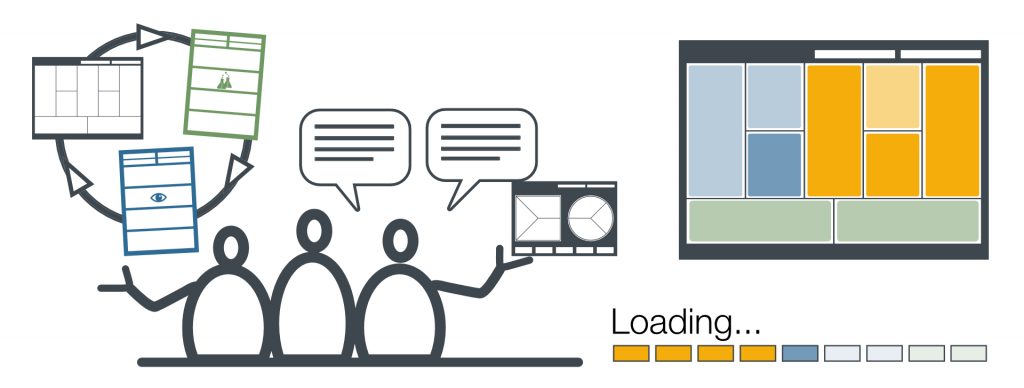
The Jobs-To-Be-Done (JTBD) methodology is a pragmatic approach to developing products that is rooted in understanding the fundamental desires and necessities of our customer base. Understanding a customer’s objective (job) with a product or service and moulding it to achieve the desired outcome better than other solutions is the crux of the matter. The Jobs-to-be-Done (JTBD) approach doesn’t presume that customers purchase a specific product or service. Rather, it focuses on the job that customers are trying to accomplish. The JTBD approach recognises that customers don’t buy products for the sake of owning them, but because they have a particular task or job to complete, and they believe that the product will assist them in achieving that goal. The JTBD approach prioritises the customer’s requirements over the product or service being offered, allowing businesses to provide more effective solutions that meet their customers’ needs.
The JTBD method consists of four steps:
In order to identify the specific jobs to be done that a customer wishes to accomplish, we need to have a clear understanding of their goals and duties. By comprehending their objectives and responsibilities, we can accurately determine the job that needs to be completed to help them make progress. For this purpose, we can conduct interviews with customers, carry out data analysis or collect customer feedback. In order to understand the context of the job, we need to understand the situation of the customer in which the job is done. For example, we could examine the customer’s environment, the tools or devices he uses, or the other people who interact with him. After all, we have to develop a product or service that can fulfil the customer’s job in the best possible way. Above all, however, the product or service must help to fulfil the job better in certain situations than the solutions previously “hired” by the customer in order to have a relevant chance of success on the market.
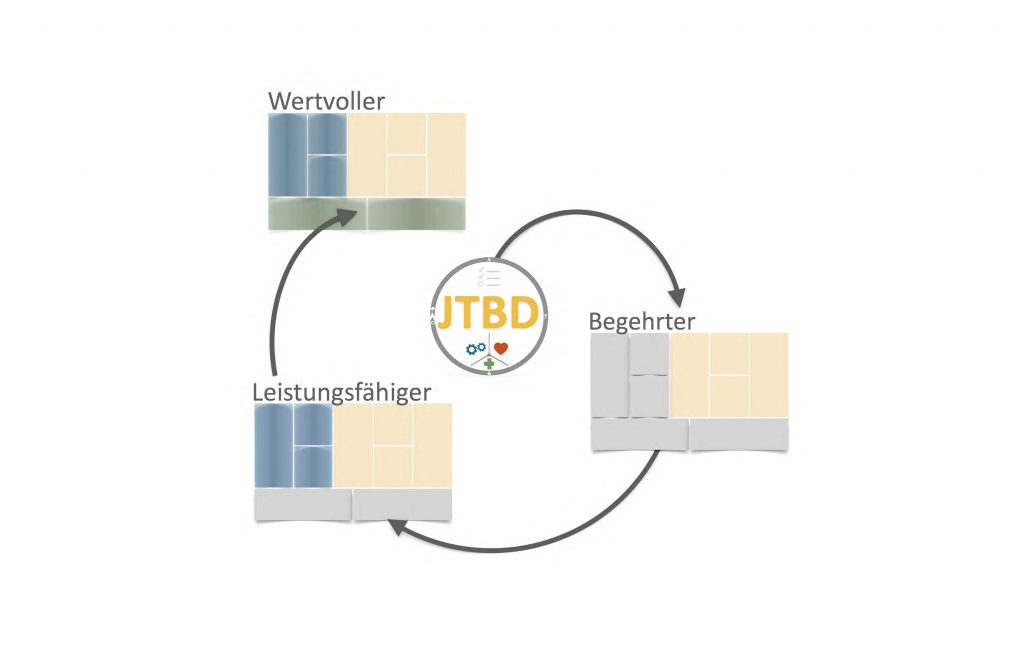
The Jobs-to-be-Done (JTBD) methodology is of significant importance as it provides us with an enhanced comprehension of the wants and necessities of our clientele. This allows us to create and offer products or services that cater to their specific requirements. Put simply, the Jobs-to-be-Done (JTBD) approach empowers us to create offerings that are in line with the customer’s viewpoint, thus enhancing the likelihood of their contentment and dedication to our brand. Put simply, the Jobs-to-be-Done (JTBD) approach empowers us to create offerings that are in line with the customer’s viewpoint, thus enhancing the likelihood of their contentment and dedication to our brand.
A well-defined framework based on the Jobs to be Done (JTBD) methodology, which encompasses research management, value proposition, and business model design, can yield significant time and resource savings for organizations. The Innovation Framework of Oberwasser Consulting is such a process. The framework provided enables companies to concentrate on their customers’ demands and necessities and craft efficacious strategies for product development and innovation. Our methodology is of such exceptional quality that we offer a guarantee on it without hesitation! If you’re interested in learning more about how we can assist your company in implementing JTBD, reach out. Feel free to call us directly: +49 221 16841669

Resume
The Jobs-to-be-Done method is an effective method of product development based on the needs and requirements of customers. A structured JTBD-based innovation process that involves research management and includes both value proposition and business model design can substantially help companies develop successful products and services and compete. The Oberwasser Consulting® Innovation Framework is one such process and can help companies develop effective product development and innovation strategies.
In today’s world, businesses in the hospitality and retail sectors face many challenges when it comes to cashless payments. Whether it’s capturing data securely or finding the right compromise between convenience, security and fees, there are many factors to consider. To find solutions to these challenges, innovation expert Peter Rochel talks to Bastian Feder, founder of Lightning Payment Services AG and creator of Lipa, a Bitcoin-based technology for cashless cash, in this podcast episode. In this post, we will look at the key issues covered in the episode, including: Data collection and security, customer benefit vs. merchant benefit, convenience vs. security vs. fees, the need for Bitcoin, the implementation of new payment systems and the field test of BTC22. Read on to learn why businesses are doing away with cash and why a new payment service offering like Lipa is needed, or listen to the episode right here:
00:00:00 Teaser
00:00:56 Reactions and notes on chapter markers
00:04:29 Intro
00:09:30 Margin killer in payment traffic
00:12:10 Lightning-Rail in payment traffic
00:23:42 Cashless for all
00:26:19 No chargeback risk
00:35:47 3000 Payments in 36h
00:38:30 BTC in Euro out
00:41:03 Data security
00:49:11 Implementing Lipa in the company
00:56:19 The Business Model
01:00:15 Using LIPA in the company
01:04:51 Investing in Lipa
01:07:15 Advice to the younger me
01:10:13 Bitcoin for business
01:13:05 Get Out
As an entrepreneur, it is important to keep in mind the needs of your customers as well as those of your business. It is a tightrope walk to optimise both at the same time. On the one hand, you want to offer your customers the easiest and most convenient payment process possible, but on the other hand, you also want to make sure that payments are secure and free of charge for your business.
Lipa offers a solution that benefits both customers and traders. By using Bitcoin-based technology, the payment process can be handled quickly and securely. In addition, there are almost no fees for the merchant, as is the case with some other cashless payment methods.
Another advantage of Lipa is that it offers the customer a higher degree of control and overview over his payments. As Bitcoin is organised in a decentralised way, the customer can manage and monitor his payments himself without a third party being involved.
In summary, Lipa offers a solution that benefits both customers and traders, creating an optimal balance between convenience, security and cost efficiency.
Another important factor when choosing a payment system is the balance between convenience, security and fees. Here it is important to carefully balance the needs of the client and the company.
Lipa offers an excellent balance between these three factors. The payment process is quick and easy, as it is handled via a mobile app. This increases the comfort for the customer. In addition, the use of Bitcoin-based technology offers a high level of security, as the transmission of data is encrypted and organised in a decentralised manner. As there are no fees for the trader, cost efficiency is also guaranteed.
Many businesses wonder why use Bitcoin when there are already so many other payment methods. Here are some reasons why Lipa considers the use of Bitcoin as the underlying technology for his payment system to be sensible:

In hospitality and retail, businesses face challenges in cashless payments, such as secure data capture and finding the right compromise between convenience, security and cost efficiency. In this podcast, Bastian Feder, founder of Lightning Payment Services AG, talks about Lipa, a Bitcoin-based technology that offers solutions to these challenges.
The Lightning Network is an additional layer for blockchain technology, especially for the Bitcoin blockchain. It is a decentralised network that enables users to carry out fast and inexpensive transactions.
The Lightning Network uses a network of channels that can be set up between users to carry out transactions. These channels are interconnected via a network, allowing users to send transactions directly from one channel to another.
The aim of the Lightning Network is to increase the scalability and speed of transactions without increasing costs or slowing down network speeds. The Lightning Network is expected to be an important part of the future blockchain infrastructure.
Lightning network technology offers many advantages over existing infrastructures, especially in terms of speed, cost and efficiency.
In cashless payments, the Lightning Network can lead to faster and cheaper transactions. It also offers a higher level of security.
The Lightning Network can also improve existing infrastructures by speeding up transactions and reducing the load on the main blockchain network.
Overall, the Lightning Network offers many opportunities to improve the way we deal with money and value, and is expected to become increasingly important in the future.
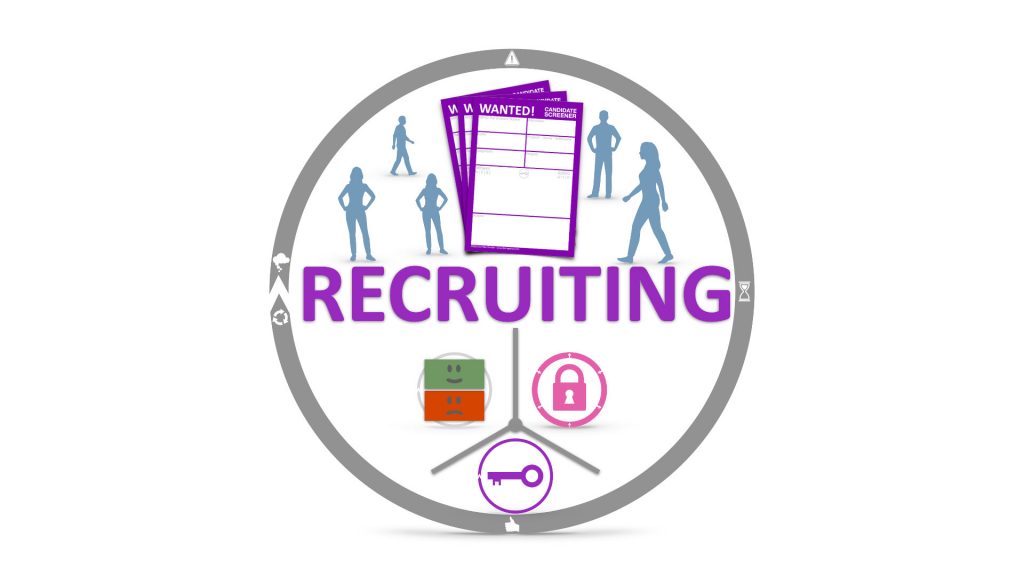
In this JTBD podcast shot, Peter Rochel explains how you can safely get the best participants for your Jobs to be Done interviews in 3 steps. Peter shows what exactly needs to be considered and reveals valuable tips and tricks that will save you time, nerves and money – regardless of whether you want to recruit the guests yourself or hire an agency to do it for you.
Listen directly to I+U Season 2 Episode 037 here (German language)
All timestamps of the chapters of this episode:
00:00:00 Intro
00:01:08 1. Who do you need to talk to?
00:01:41 Customers
00:02:15 Customers in the B2B/B2G context
00:03:35 Non-Customers
00:05:49 2. how to get interview guests
00:09:18 3. preparations
00:09:26 Incentives
00:10:36 Prepare cover letter
00:13:19 Writing a Screener
00:14:28 Plan appointments and lead times
00:15:57 Do’s & Don’ts
00:20:17 Tooltipps
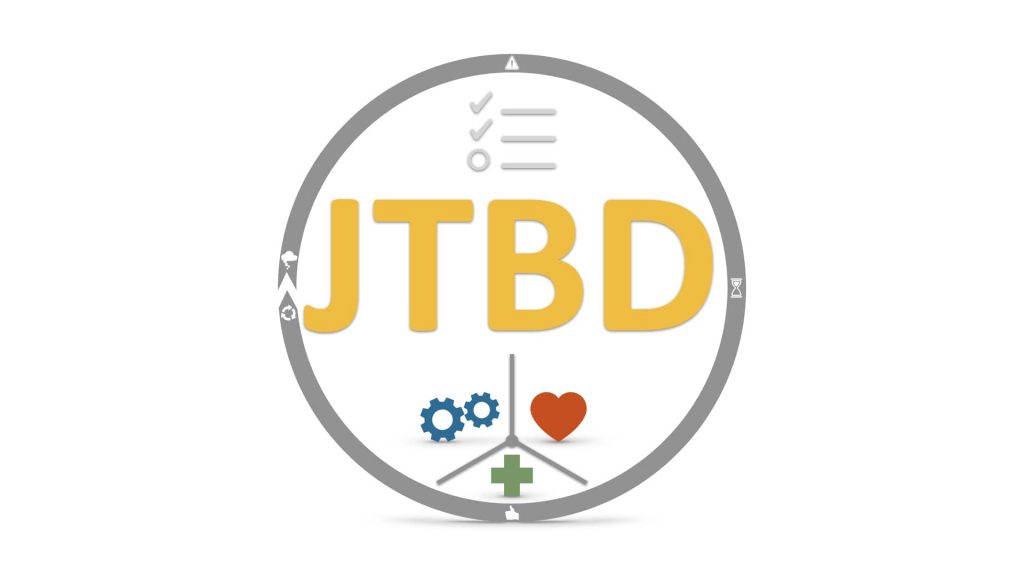
A Job to Be Done, or customer job, describes how people want to make progress in specific situations – whether business or personal.
Listen directly to I+U Season 2 Episode 016 (German language) here
00:00:00 Intro
00:00:47 JTBD Definition
00:01:05 Job Examples
00:01:53 Good JTBD Descriptions
00:02:52 Overcome the Problem Solution Gap
00:03:48 Get out
Good examples of such JTBD might be: help me get a hole in the wall; or help me hang a picture; or help me live more nicely; or help me be considered a good DIYer and so on.
For all these JTBD I could hire a drill to do it completely or at least make some progress. But I could just as easily have hired something else entirely.
So jobs can have functional, emotional or social dimensions.
Jobs have functional, emotional and social dimensions
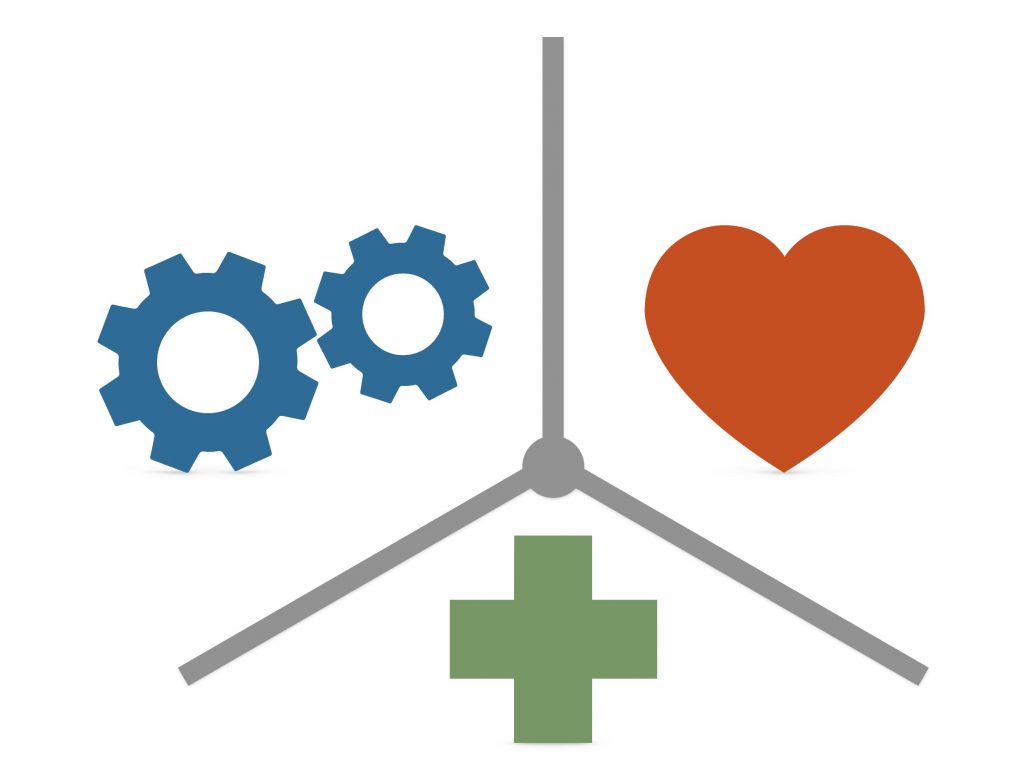
It is important to understand the job and especially the circumstances in which it occurs as precisely as possible. The exact description of a job shows under which conditions people permanently change to new behaviour patterns, solutions, products, services or brands.
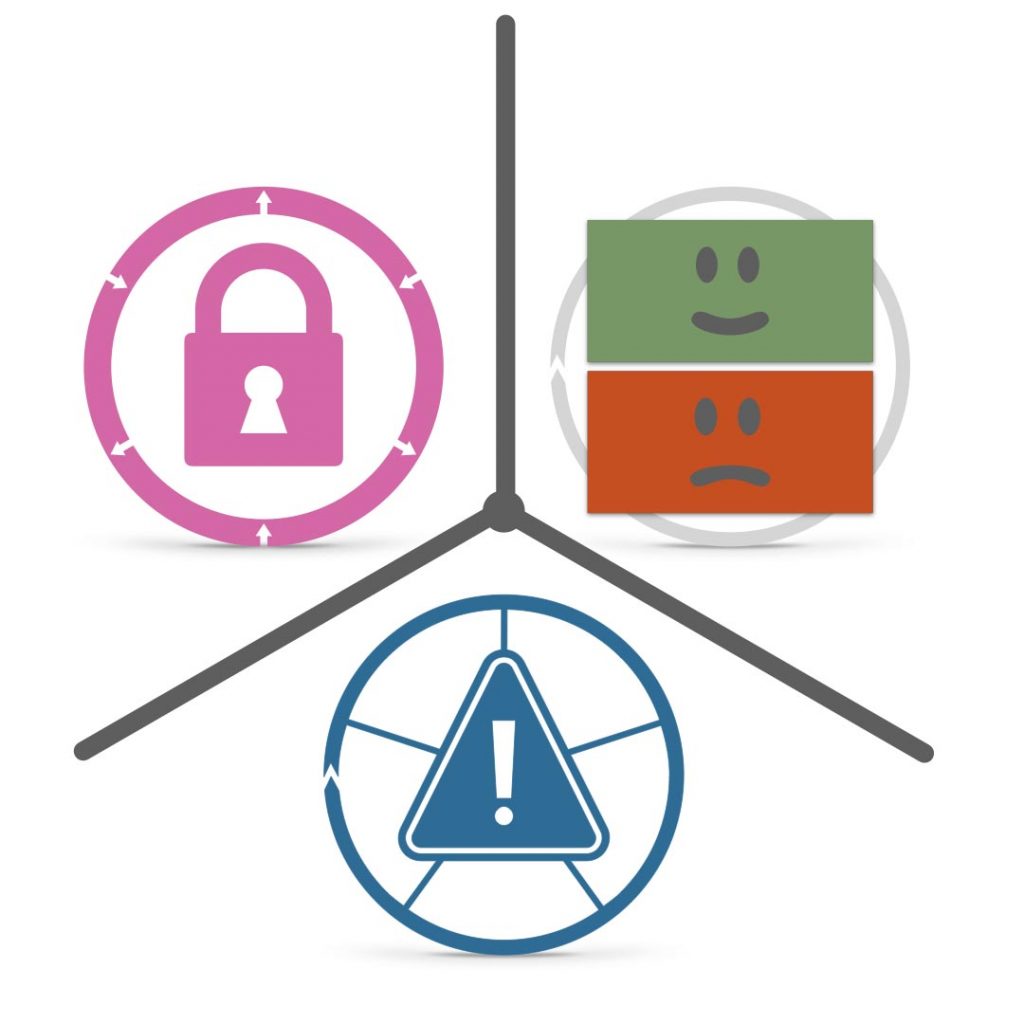
Events are usually divided into up to 5 different categories, forces into up to 8, limiting context into up to 3 categories.
So that it does not become too complex, the rule of thumb applies here too: as much as necessary, as little as possible.
Helps you describe client jobs as simply as possible and as accurately as necessary: The Wheel of Progress® Canvas
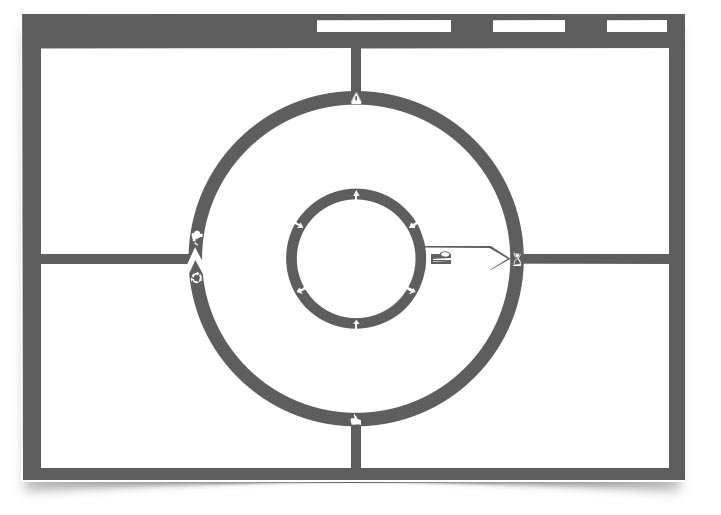
The perspective of the Jobs glasses helps to break down the invisible wall between the supplier perspective and the customer perspective, to make the problem-solution gap a little more surmountable, which is the reason why a high multi-digit percentage of all innovations fail. In future, ask yourself more often: For which job did you actually commission a certain product? Or for which job your customers hire your product…
Yes, the term alone is a bit confusing, to clarify a bit here in advance.
The terms used are job, customer job, progress, JTBD or job to be done or jobs to be done.
When I speak of one of these terms here and now, I always mean a job to be done in the sense of the Jobs to Be Done theory and nothing else.
Well, a Job to Be Done, what is that anyway?
A Job to Be Done describes how people want to make progress in concrete situations and it doesn’t matter whether it’s business or personal.
Good examples of such a Job to Be Done could be: Help me to get a hole in the wall or help me to hang a picture or help me to live nicer or help me to be considered a good handyman and so on.
So you see, jobs in this sense can have functional, emotional or social dimensions.
For all these jobs or Jobs to Be Done, I could hire a drill to do it, the job, completely or at least make some progress on it.
Aber ich hätte genauso gut etwas ganz anderes einstellen können.
This means that jobs always have different solutions and each product can do different jobs.
It is important to understand the job and, above all, the circumstances in which it arises, as precisely as possible.
Because a precise description of this job shows you exactly under which conditions people permanently change to new behaviour patterns, solutions, products, services or brands.
For such a precise description of a Job to Be Done, which is particularly good to work with, there are always three elements, namely events, forces and limiting context.
Events can usually be divided into up to five different categories, forces into up to eight categories and limiting context into up to three.
Here, too, as with all things, so that it doesn’t get too complex, the rule of thumb is as much as necessary, as little as possible.
Job descriptions, for example, can be presented particularly well on a canvas such as The Wheel of Progress® .
Well, what’s the point of all this?
The Jobs to Be Done perspective alone helps you break down that invisible wall between the provider perspective and the customer perspective.
So, making the problem-solution gap a little more surmountable, because that is responsible for a high multi-digit percentage of all innovations failing.
So just put on these job glasses in your mind in the future and ask yourself for which job you actually commissioned a certain product that you are currently using, or even better, ask yourself for which job my customers commissioned it.
And that alone helps you to make the problem or so-called problem-solution gap a little more surmountable, namely that things are built that are solutions to problems that no human being has.
Well, and that’s all for today.
You can learn more about the jobs to be done theory in episode 3 of the first season, where I discuss the topic together with Eckhart Böhme.
If you have any questions about the topic or need help, feel free to contact me or listen to how, for example, the implementation of jobs to be done can look in a research management.
If you liked it, I’d be delighted if you gave it a few stars in the rating, for example on Apple Podcast.
Otherwise, sunny greetings and I hope to hear from you soon.

Is this disruptive, market-creating, or irrelevant? Is your next product, feature, marketing idea, sales strategy… (you name it) from the customer’s point of view super relevant or irrelevant? That’s the question that will be the topic at our next Meetup in Cologne.
Do you have any certaintyabout what your customers are really going to buy and are you able to build a predictably successful product with it? We don’t either. But we have a theory and an excellent toolsetthat will help you get this information in very short time. At the Meetup on 05.03.2020 you can try it yourself.
Exclusively and directly on meetup.com – whether it’s already possible you can check here:
Our hosts on 05.03.2020: Okandada, at Hohenzollernring 16-18 in 50672 Cologne

It’s not really necessary, but if you really want to, listen to our podcasts about Jobs to Be Done! Right here

On 08.01.2020 we continue, this time as a guest at wework. In this meetup we first refresh the JTBD basics. Then we deal with the Jobs to Be Done evaluation canvas “Wheel of Progress®”. Alexander Moths and Peter Rochel play through the application with you using a real case. Today it will be about winter coats. For which JTBD is a winter coat commissioned, and what exactly is the progress? Then we want to discuss with you the benefits, opportunities and impacts of this tool for future innovation projects.
Save the date – Registration open from 2 January 2020.




Timing:
open doors: 6:30 p.m.
meetup: 7 – 9 p.m.
All out: 9:30 p.m.